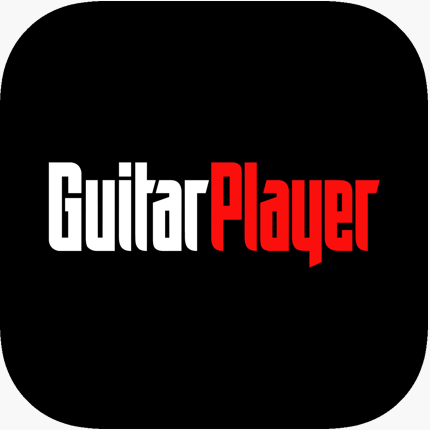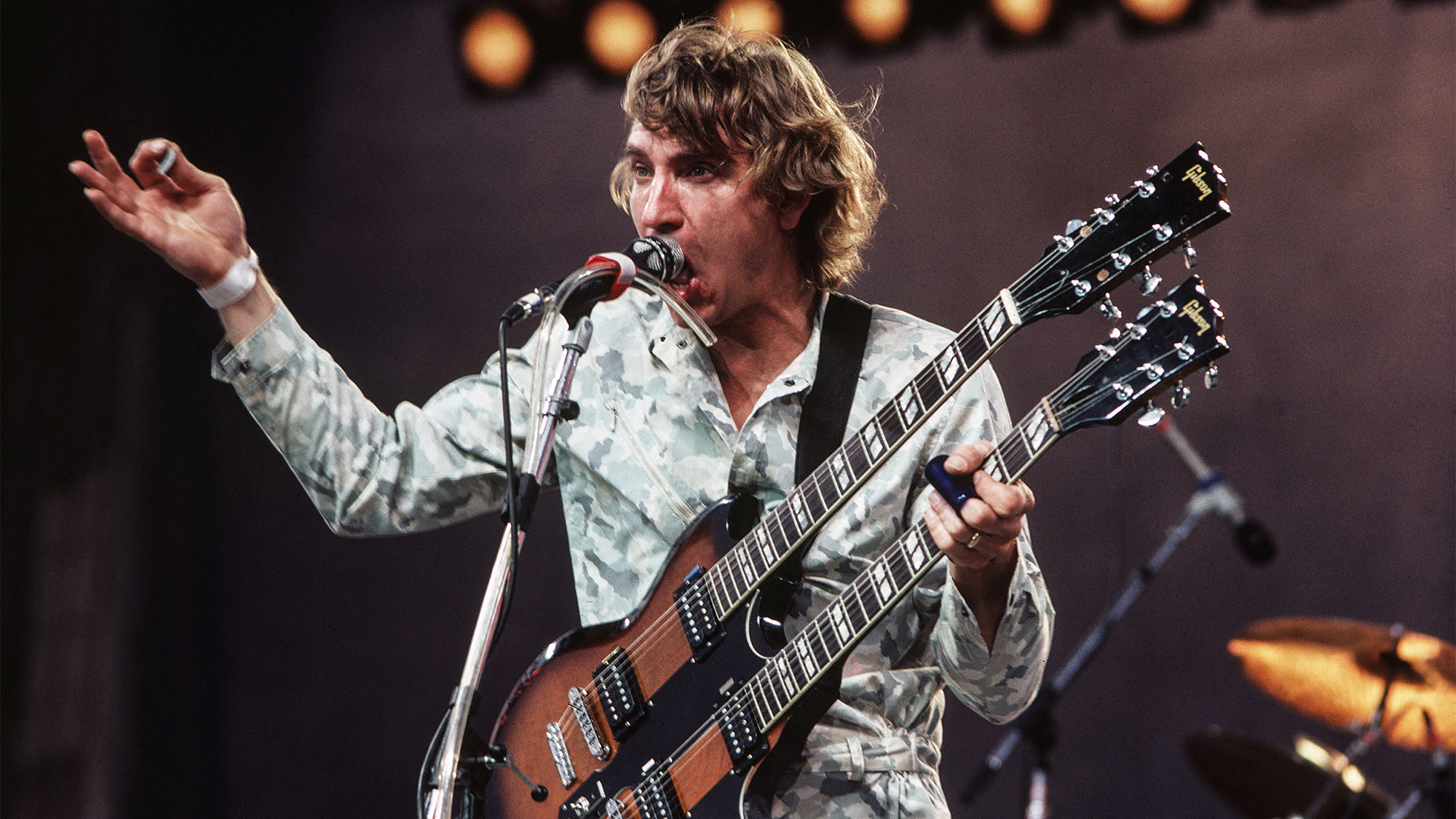"They launched a revolution that continues to this day." Meet 30 players who tapped, twanged, sweep-picked and shredded the 1980s to its greatest glory
From Eddie Van Halen and Stevie Ray Vaughan to Daniel Ash and Jamie West-Oram, we present the decades' greatest players across the genres
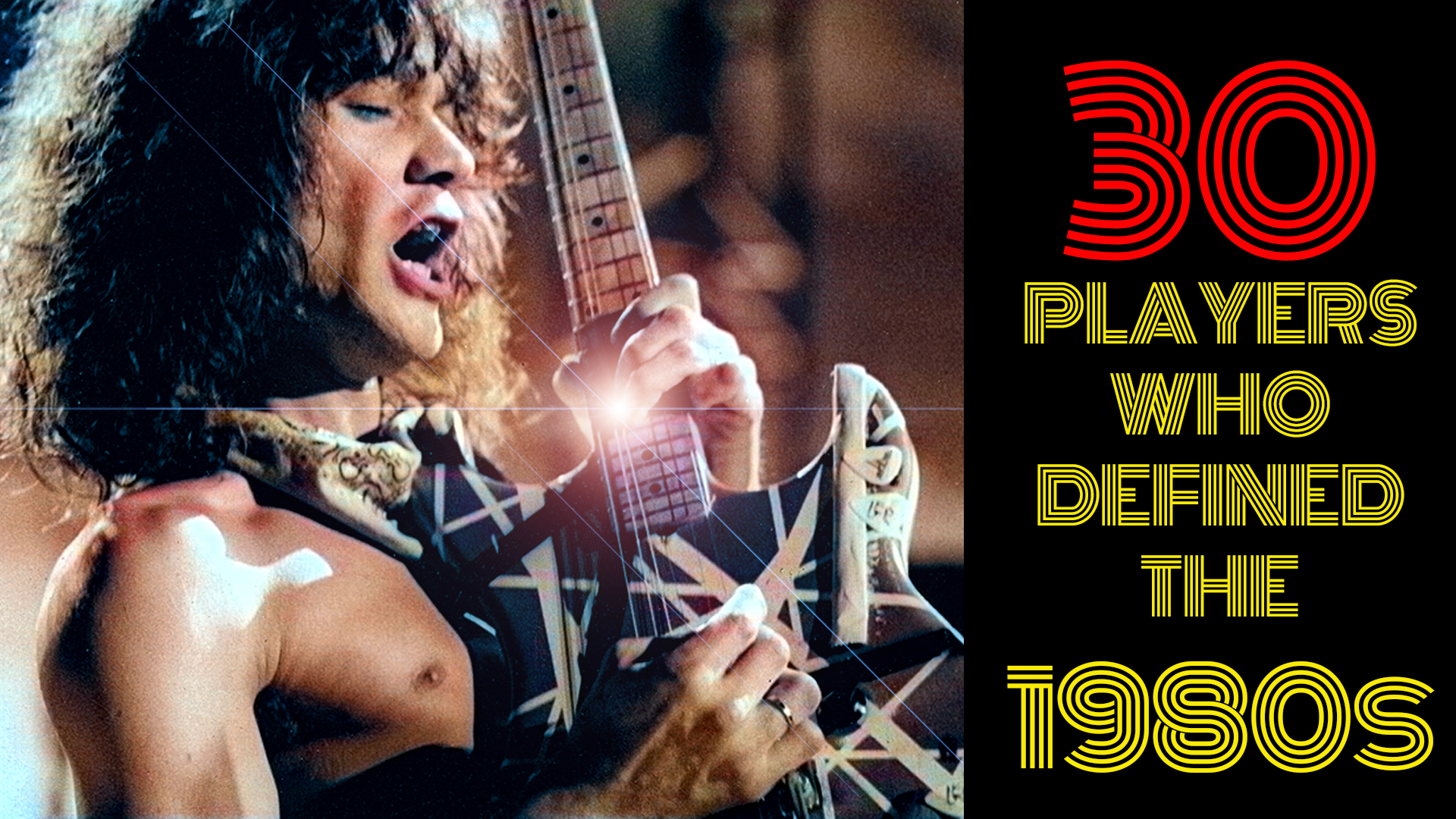
Despite fears that drum machines and synthesizers would eclipse the guitar in pop music, the 1980s were an incredibly fertile time for electric guitar. Virtuoso soloists like Joe Satriani and Eric Johnson landed instrumental tunes on mainstream rock radio. Steve Val was in heavy rotation on MTV playing with former Van Haien mouthpiece David Lee Roth, and even had a role in the hit film Crossroads.
Then there was Eddie Van Haien, who — after raising the rock world's collective eyebrows with his solos on 1978's Van Halen and '79s Van Halen II — kept the heat up throughout the '80s with a slew of crowd-pleasing albums. Van Halen's celebrity extended beyond guitar culture. He could be seen regularly on MTV and had a cameo on Michael Jackson's mega-single "Beat It."
But virtuoso shred wasn't the only game in town. Many bands — including the Smiths, Bauhaus and U2 — featured guitarists who consciously avoided six-string histrionics. These players were texturalists who used broad palettes of effects to color and shade their music. Their approach grew in popularity, and by the mid '80s, no serious working guitarist could show up at a gig or recording session without the requisite chorus, delay and flanger pedals, or a rack full of digital processors and multieffects.
With the 1980s several decades behind us, we decided to look at the players who molded the sound of guitar back then. We didn't do it for nostalgia's sake. After all, there's loads of inspiration to be found in the tones and ideas these players hatched back in the day. Fire up Metallica's Kill 'Em All and hear just how devastating power chords can be. Spin a Michael Hedges disc and you'll never again think of acoustic guitar as the electric's folky cousin. Throw on a Police album and you're bound to get some new tonal inspiration. Step into the Guitar Player time machine, and you'll see what we mean as we present the decade's most innovative guitarists. They launched a revolution that continues to this day.
Daniel Ash
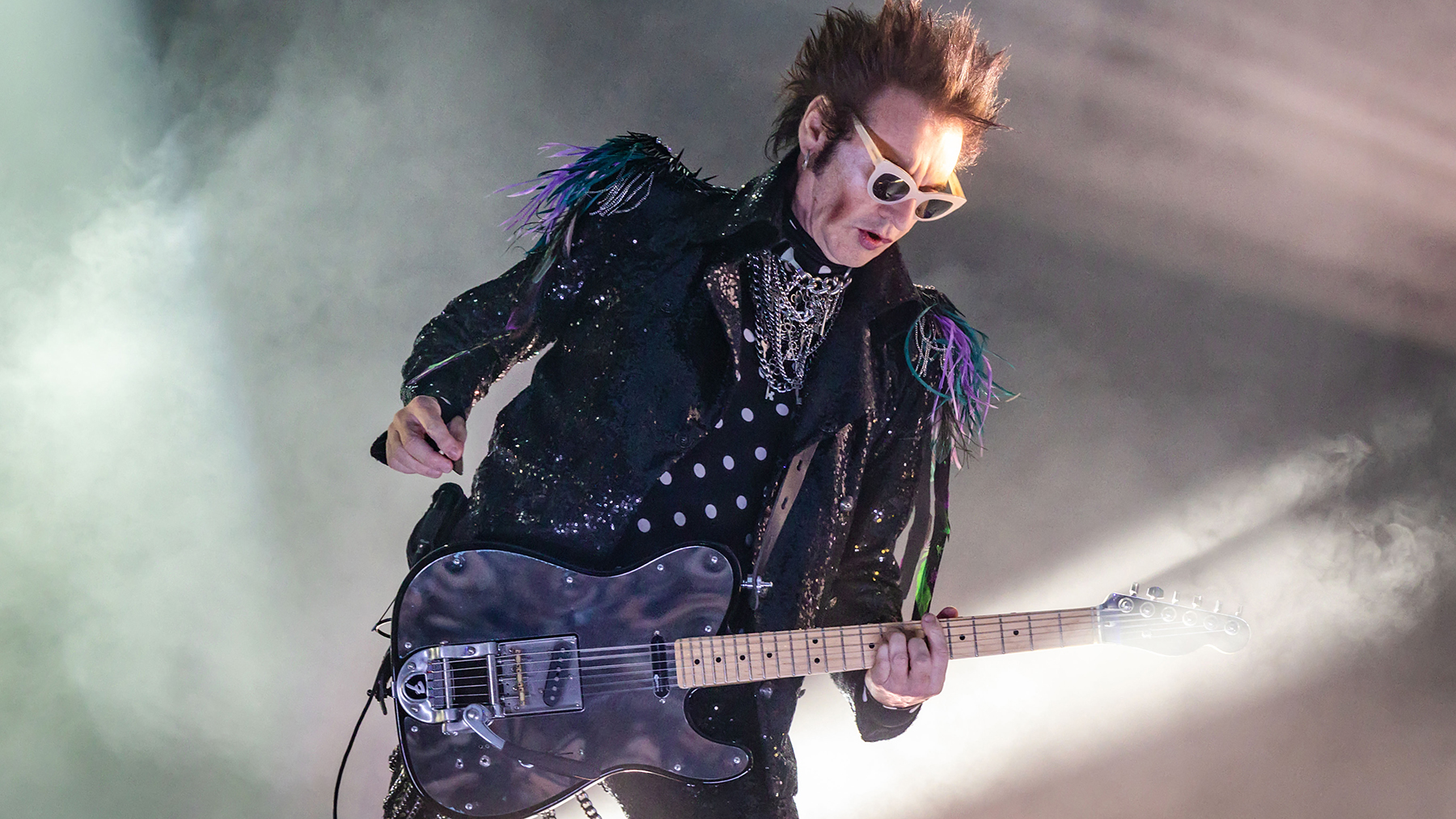
The goth-influenced soundscapes of English art-rockers Bauhaus and subsequent splinter group Tones on Tail (basically Bauhaus, sans lead singer Peter Murphy) spotlighted Ash's edgy-but-atmospheric tones and creative use of noise. And even when TOT later changed their name to Love and Rockets, and ventured in a more song-oriented direction, Ash never strayed from his ideal of texture over flash. "I love the idea of music that sounds like it comes from another world, but you can still tap your foot to it," he told GP in 1994. "I always found the notion of solos comical — just ego wanking."
Though the EBow was an essential part of Ash's razory sound since the beginning (often pressed directly against the neck pickup), he also relied on delay, flange and tremolo pedals, and employed such tricks as banging on a reverb-equipped amp to coax guitar sounds that were indistinguishable from synths, samples or industrial machinery.
KEY TRACKS "Bela Lugosi's Dead," "Terror Couple Kill Colonel," "Stigmata Martyr," "Hot Trip to Heaven"
All the latest guitar news, interviews, lessons, reviews, deals and more, direct to your inbox!
1980s GEAR Burns guitars, H&H IC100S amp, Heet Sound EBow, DOD chorus and tremolo pedals, Watkins Copicat tape echo — AT
Adrian Belew
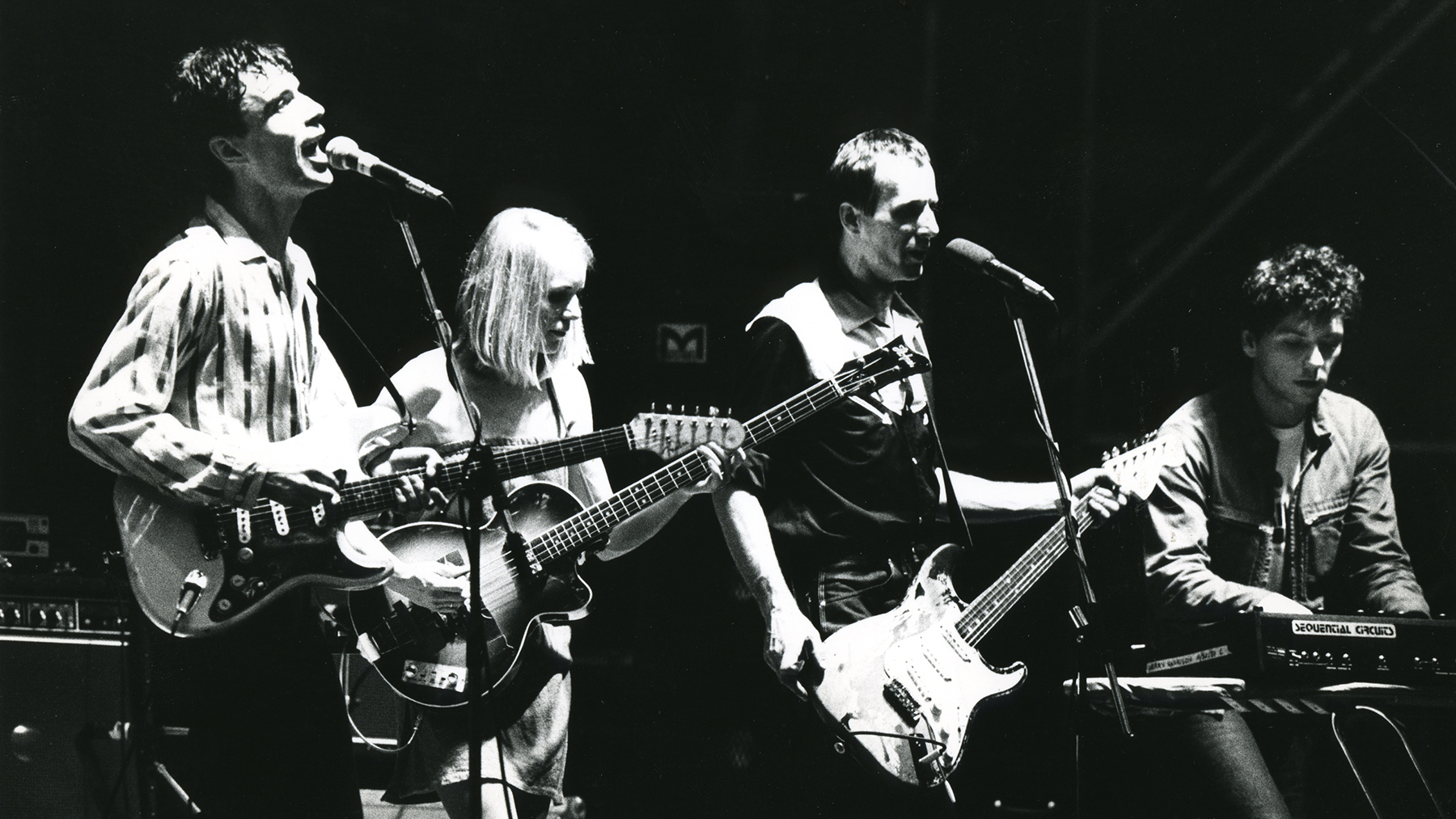
In an era when many guitarists felt threatened by the expansive sonic possibilities of synthesizers, Belew single-handedly proved the guitar to be a limitless tool for unheard-of sounds that no synth could match — from beautiful whale moans to jarring electronic screams. His mind-blowing sonic assaults made him one of the preeminent experimental rock guitarists of the 1980s, and landed him work with King Crimson, Laurie Anderson and David Bowie (on 1979's Lodger, then as Bowie's musical director for the '86 Sound and Vision tour). And Belew's not just a "noise" guy — he's also a master of subtlety. Listen to the Tom Tom Club's hit "Genius of Love." What sounds like a steel drum is actually Belew tapping the strings with one hand while manipulating the resonance control of an ADA flanger.
Belew's contributions to Talking Heads' 1980 release, Remain in Light, still stand as some of rock guitar's most monumentally creative offerings. "Talking Head's music at the time was very funk driven, one-chord stuff — a huge canvas for a guitarist to go wild," Belew told GP in 1990.
KEY TRACKS "The Great Curve" (with Talking Heads). "Elephant Talk" (with King Crimson). "Big Electric Cat," "Twang Bar King" (solo)
1980s GEAR Fender Strat, two modified Fender Mustangs, Roland JC-120 amplifiers, Foxx Tone Machine, various Electro-Harmonix and MXR effects units — DF
Warren Cuccurullo
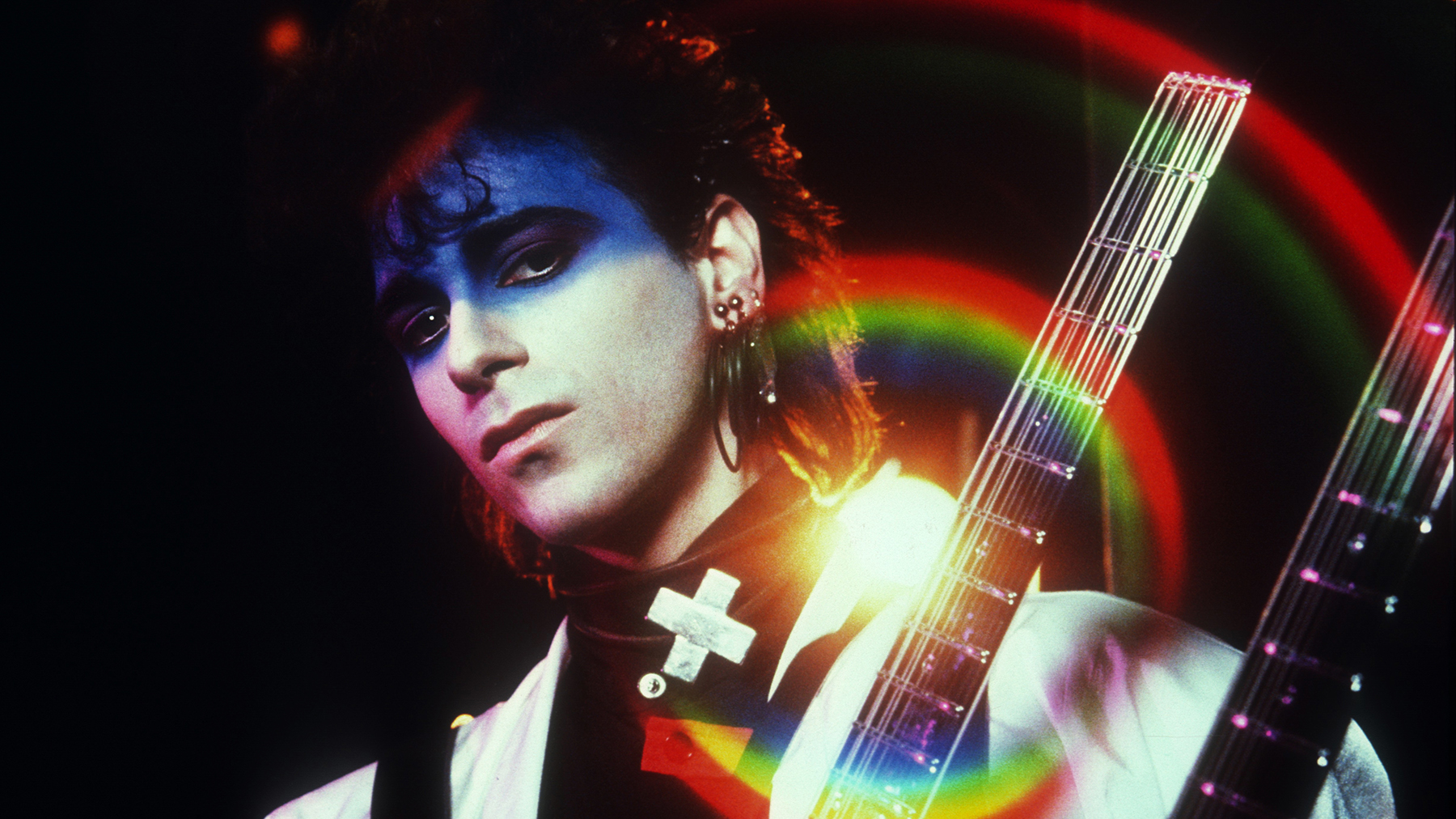
To legions of pop fans, Missing Persons was all about Dale Bozzio. But as self-conscious and tragically trendy as the L.A. band's image may have been, the "guys" (bassist Patrick O'Hearn, drummer Terry Bozzio, and guitarist Warren Cuccurullo) were absolutely murderous players. All were alumni of Frank Zappa bands, and Cuccurullo's obsession with electronics would help forge Missing Persons into one of the '80s most modern-sounding acts. His massively processed textures, lush distortion washes and soaring, synth-like lines added mystery and excitement to what were, for the most part, merely clever pop songs. And, like Missing Persons' costuming and staging, Cuccurullo's contribution to guitarcraft was scrupulously calculated.
"I want to cut my own niche in rock guitar playing," he said in a February 1985 GP interview. "I want to be easily identifiable and known as a little wiz."
KEY TRACKS "Destination Unknown," "Give," "Mental Hopscotch," "Walking in LA.," "Words"
1980s GEAR Gibson SG and ES-335, self-designed "Missing Link" solidbody (with two necks joined by a loop), custom Performance guitar, custom Vox (assembled from a Vox wah, a Vox neck, and Vox pickups), 100-watt Marshall head and 4x12 cabinet, Garvin X-100B head, Mesa/Boogie head, ADA Flanger, Foxx Tone Machine, Heet Sound EBow, Lexicon Prime Tune, Maestro Super Fuzz, Morley Echo/ Volume, Mu-Tron III, MXR Pitch Transposer — MM
Elliot Easton
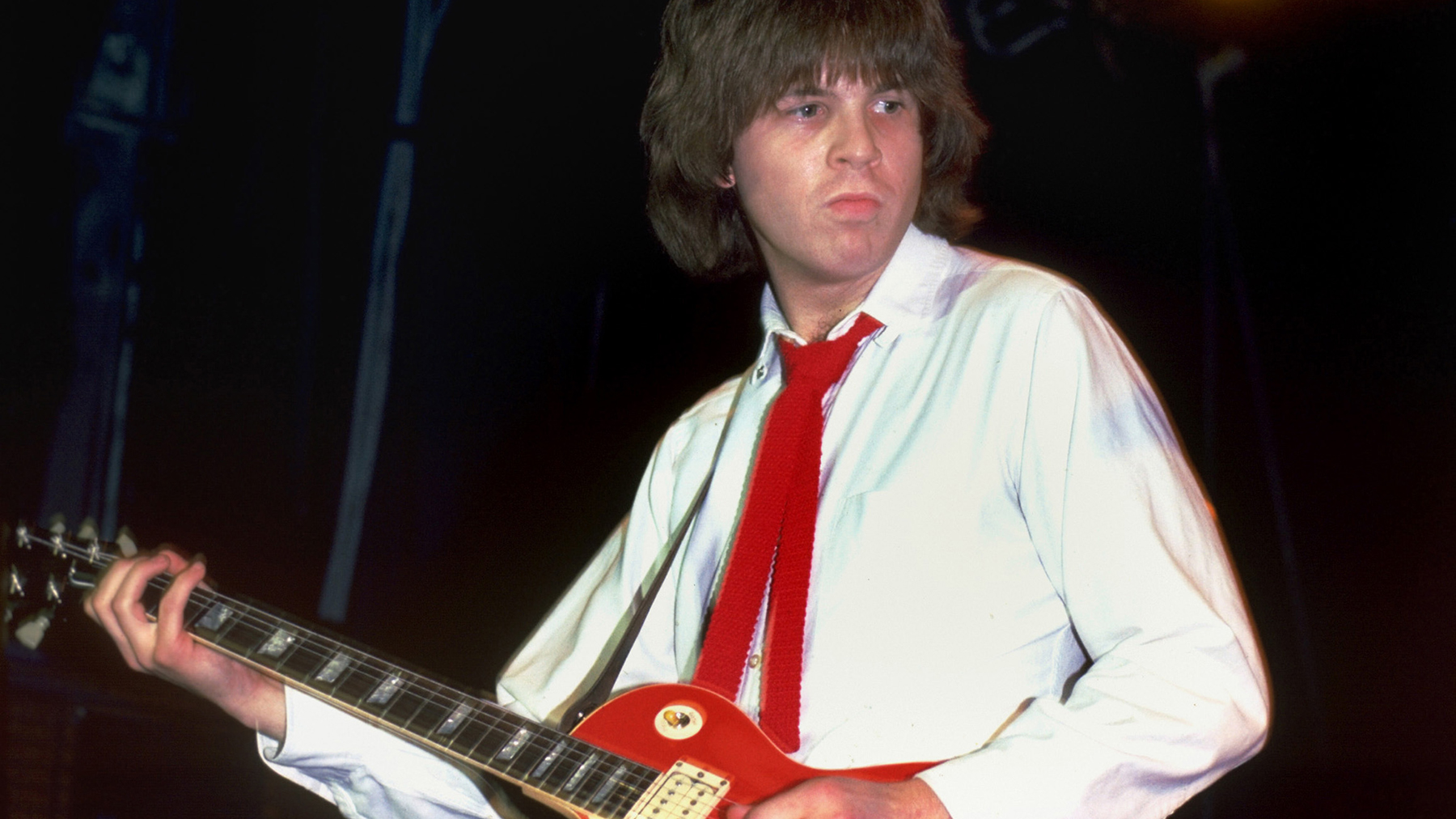
With a sound that was as far from macho '70s rock as possible, the Cars were possibly the quintessential '80s band. Looking back on his days in the group, Elliot Easton feels it was no accident that they forged one of rock's most individual and identifiable sounds. "Our different influences made us sound the way we did," he says. "Certain factions of the band were into the technological advances — keyboards and things — while my influences were Moby Grape, the Grateful Dead, and a lot of Memphis soul and New Orleans R&B. There was always a creative rub in the band that made the Cars unique."
On the group's pre-'85 records — The Cars and Candy-O — Easton managed to sneak hot country guitar ("My Best Friend's Girl") and clever bluesy solos ("Bye Bye Love") into the band's poppy tunes. "I never related to the 'skinny-tie' scene," Easton says. “And I was never impressed with the punk-guitar ethic. That whole primitive style of guitar playing is just not what I'm about." What Easton is about is simple. "I think I have a knack for making a song happen," he told GP in '86. "And that's a big get-off for me."
KEY TRACKS "Cruiser," "Magic," "Shake It Up," "Since You're Gone"
1980s GEAR Fender Strat and Telecaster ("I'm a twanger at heart" he says), mono Gibson ES-355, Guild Nightbird and Flyer, Rickenbacker 12-string electric, custom-made Kramer solidbody, assorted Dean solidbodies, assorted amps (including Lab Series, Pearce, Marshall JCM 800, various Fenders and Mesa/Boogies), Boss delay and chorus, Pro Co Rat, Scholz Rockman — DF
The Edge
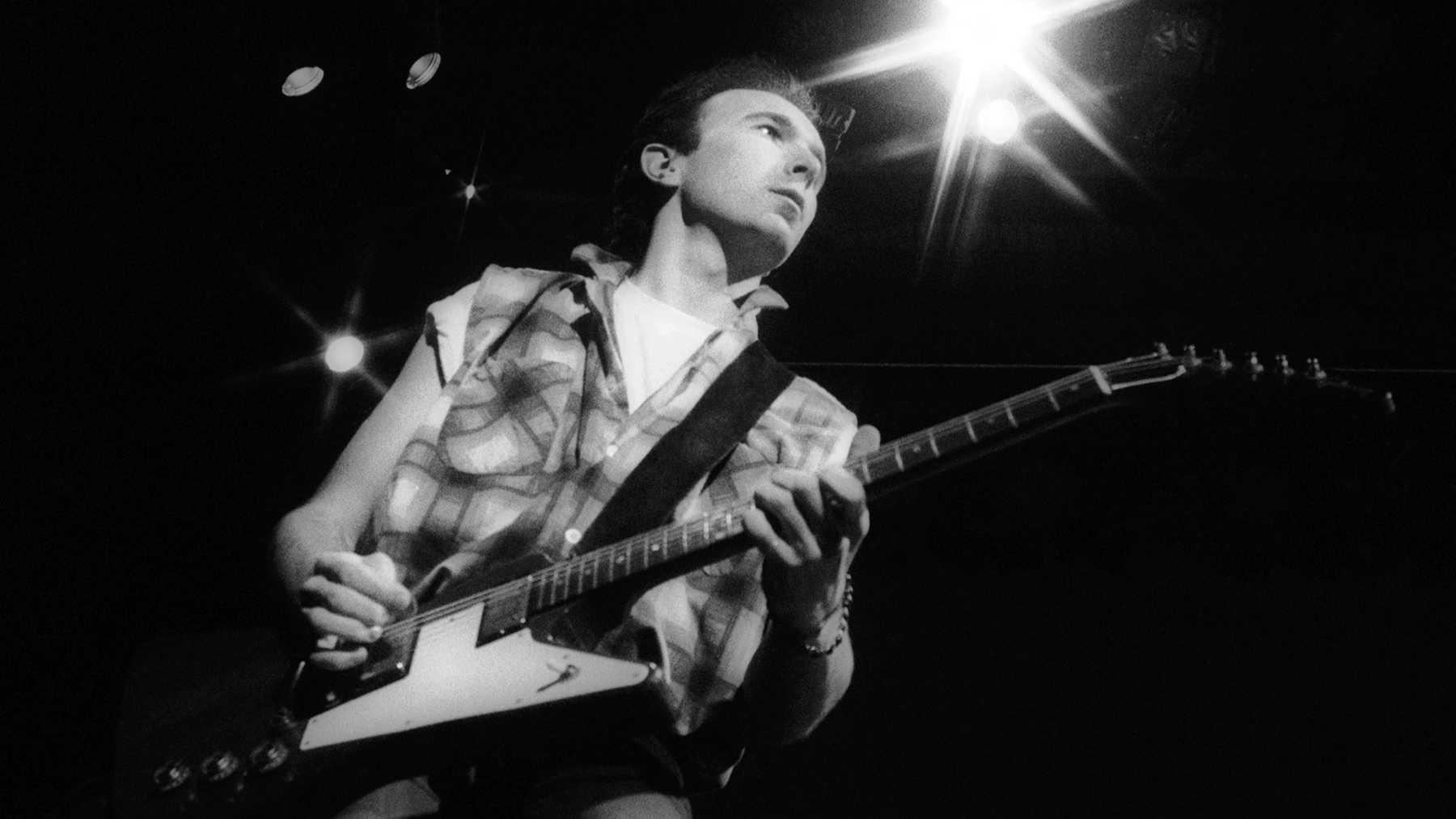
When the relentless, echo washed lines of "I Will Follow" hit the airwaves in 1980, it was immediately obvious that the world had changed. The cutting-yet-ambient guitar soundscapes were so different from anything else heard at the time that The Edge became an instant guitar hero. However, due to the band's youth — The Edge was only 19 when U2's debut was released — more than a few guitarists assumed that a non-technical player had simply stumbled onto a few glib tricks. Not so.
"I was struck by the fact that groups such as Television had a well-defined sound that was like no one else’s,” The Edge said in the June '85 issue of Guitar Player. "So when we started putting material together, it was always in my mind that we had to find what we could do that was different. The most important thing is that we maintain a certain originality in everything we do."
The Edge remained true to his quest for individuality throughout the '80s, providing fans with thrilling, almost cinematic textures, and challenging other guitarists to re-evaluate their relationship with their instrument "There's no reason on earth why guitar players should copy one another and end up sounding the same," he declared.
KEY TRACKS "Gloria," "I Will Follow," "Sunday Bloody Sunday," "Where the Streets Have No Name," "With or Without You"
1980s GEAR Gibson Explorer, Fender Strat and Tele, Vox AC30, Mesa/Boogie MK-IIC, Boss SCC-700 Effects Center, Electro-Harmonix Memory Man, Korg SDD-3000 digital delay, Yamaha D1500 digital delay and R1000 digital reverb, MXR Pitch Transposer — MM
Billy Gibbons
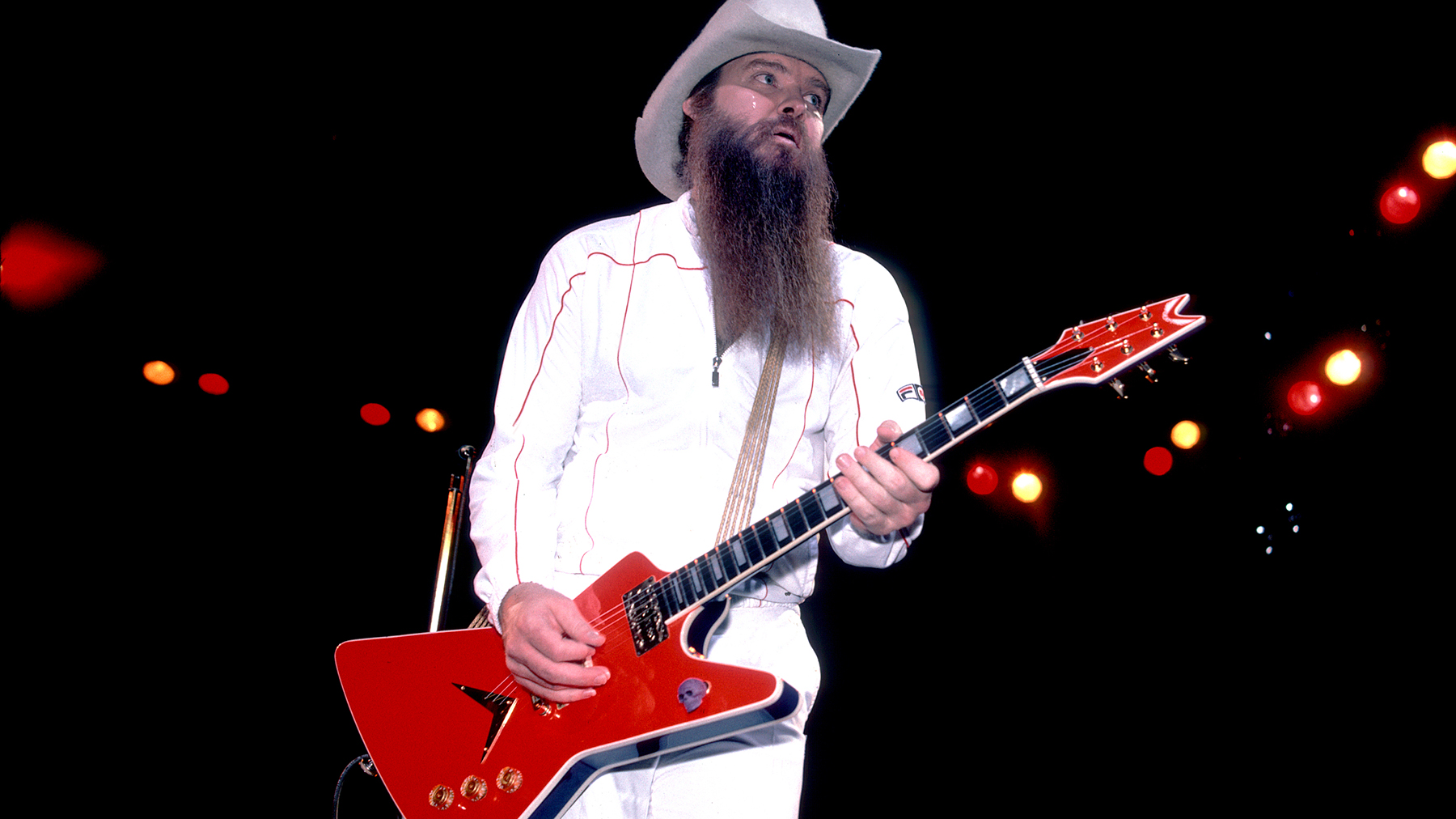
ZZ Top was already a huge concert act when the advent of MTV in the early '80s gave the "little ol' band from Texas" an opportunity to boogie its way to unprecedented heights. Video images of the bearded mysteriosos with their custom coupe accompanied hit after hit from the 1983 release Eliminator, and behind it all was Top's enigmatic guitarist, Billy Gibbons.
The trademark pick harmonics, stubby solos and grinding riffs that fueled Eliminator and the subsequent Afterburner were old tricks for Gibbons, but his streamlined approach to playing over sequenced grooves made it easy to forget that blues was still the magma at ZZ's core.
As Gibbons explained to GP in 1986, "Try as we might to spice up our sound with synthesizers and this and that, it basically comes down to a few moments of bluesiness that we want to hold onto. That's where we came from, and that's pretty much what we'd like to keep stabbing at."
KEY TRACKS "Dipping Low (In the Lap of Luxury)," "Planet of Women," "Sleeping Bag," "Velcro Fly," "Under Pressure"
1980s GEAR Dean Z, Tom Holmes customs, Strings & Things St. Blues (Strat-style guitar), Roland GR-700 synth, Fairlight digital workstation, Fender and Marshall amps, Scholz Rockman, Roland Dimension D, Ibanez rack effects — AT
Michael Hedges
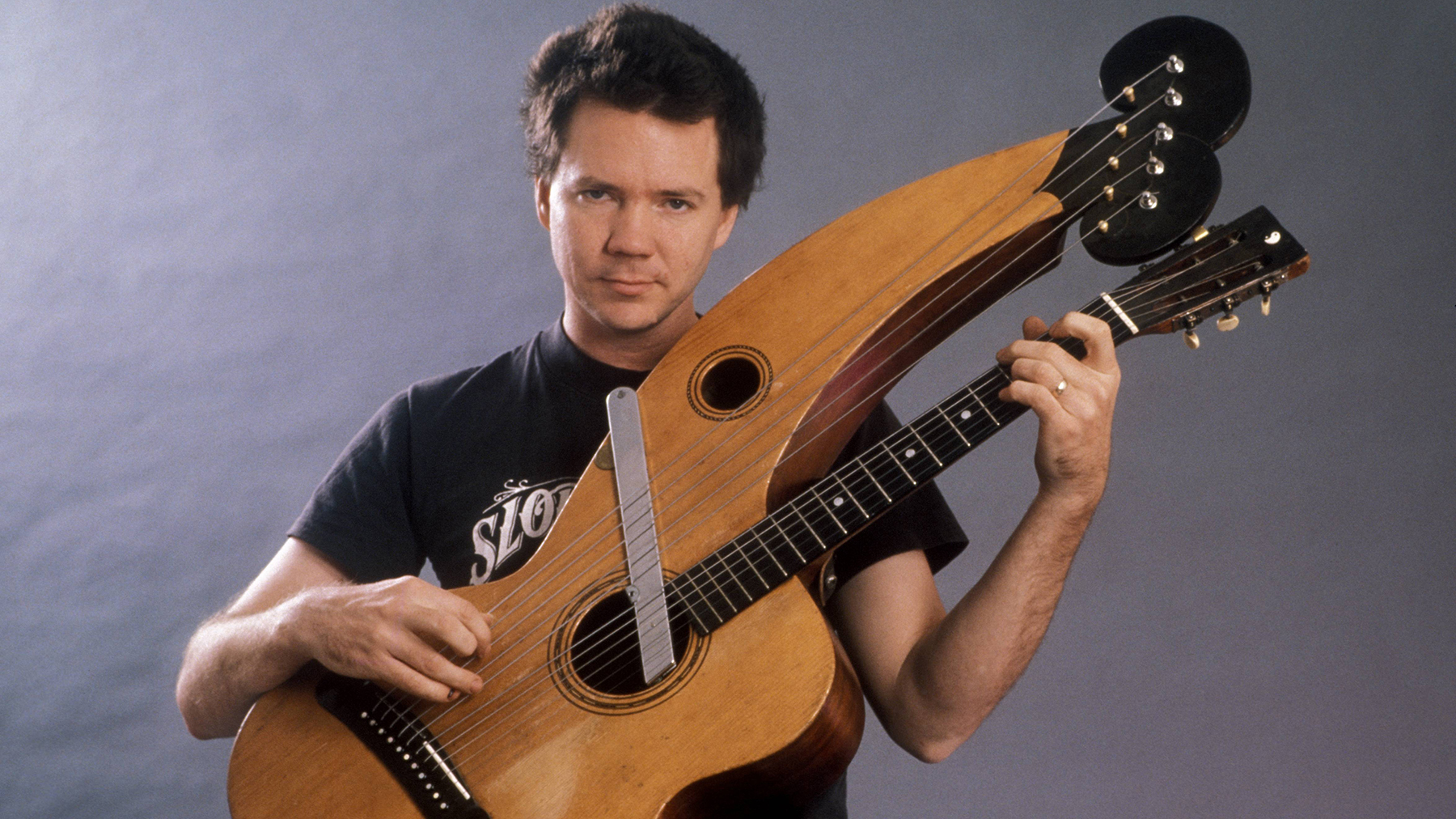
While the electric guitar was everywhere in the 1980s, the decade also ushered in a rising interest in virtuoso solo acoustic guitar players. The Windham Hill label was the launching pad for many of these guitarists, including William Ackerman (who headed the label) and Alex de Grassi.
Then along came Michael Hedges — with a style that encompassed some of the lyrical, contrapuntal approaches of his labelmates, and also incorporated funky rhythms, minimalist song structures and jazz-inspired chord voicings. As Hedges said in the February '85 Guitar Player, “Ackerman and de Grassi have good rhythm. It's just not as kinetic as mine. They're great impressionists and romantic players, but that doesn't come naturally to me."
Hedges showcased his composing and performing chops on his '81 debut, Breakfast in the Field and the '84 followup, Aerial Boundaries. The latter album featured Hedges' stupefying, one-man-band arrangements, with percussive two-handed tapping and a host of extended-range tunings. Hedges had, in effect, broken the four-minute mile, forever expanding the boundaries of what players and listeners thought was possible in the solo-acoustic realm.
KEY TRACKS "Aerial Boundaries," "The Happy Couple," "Hot Type," "Rickover's Dream," "Spare Change"
1980s GEAR Martin D-28 and00-18, Dyer harp-guitar — AL
James Hetfield
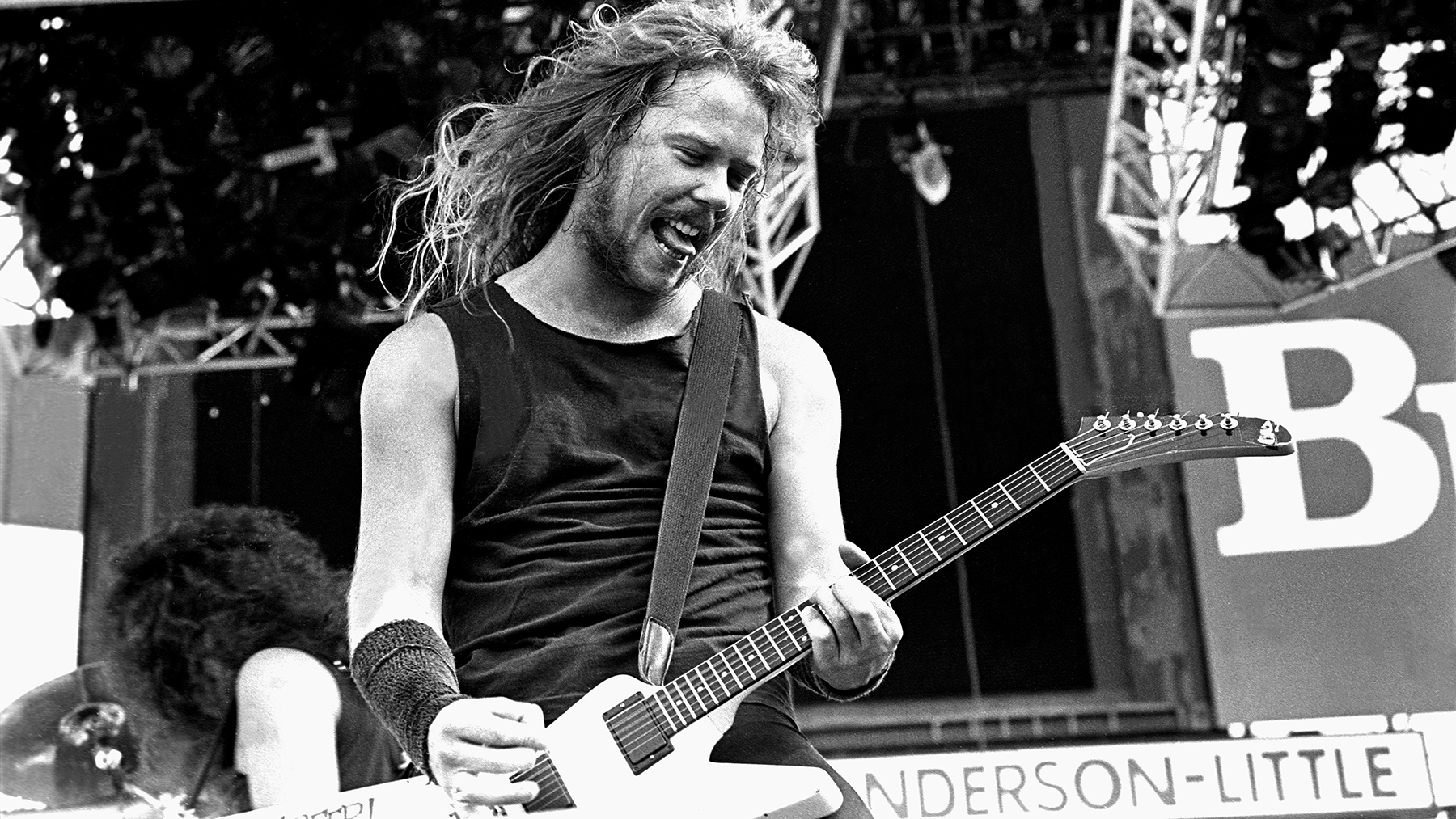
"There was the real glammy stuff when we were starting out playing the clubs in L.A. — the Mötley Crües and the Ratts," James Hetfield said in the April '89 GP. "Music was based around the singer, and no one was really riffing."
With Metallica's first three records, Kill ‘Em All, Ride the Lightning, and Master of Puppets, Hetfield single-handedly changed that, and metal was never the same. Performed with Gibson Flying V or ESP Explorer-style guitars and Mesa/Boogie Mark II heads, Hetfield's punishing lock-step riffs spawned several copy-cat bands, as well as a legion of young, denim jacket-clad guitarists hell-bent on learning Metallica tunes — not the solos, but Hetfield's speedy power-chord riffs, performed almost solely on heavy downstrokes. "That's key!” he said. “It's tighter sounding and a lot chunkier.”
KEY TRACKS "Creeping Death," "Eye of the Beholder," "For Whom the Bell Tolls," "Four Horsemen," "Whiplash"
1980s GEAR Gibson Flying V, ESP Explorer-style solidbody (loaded with EMG pickups), Mesa/Boogie Mark II heads — DF
Allan Holdsworth
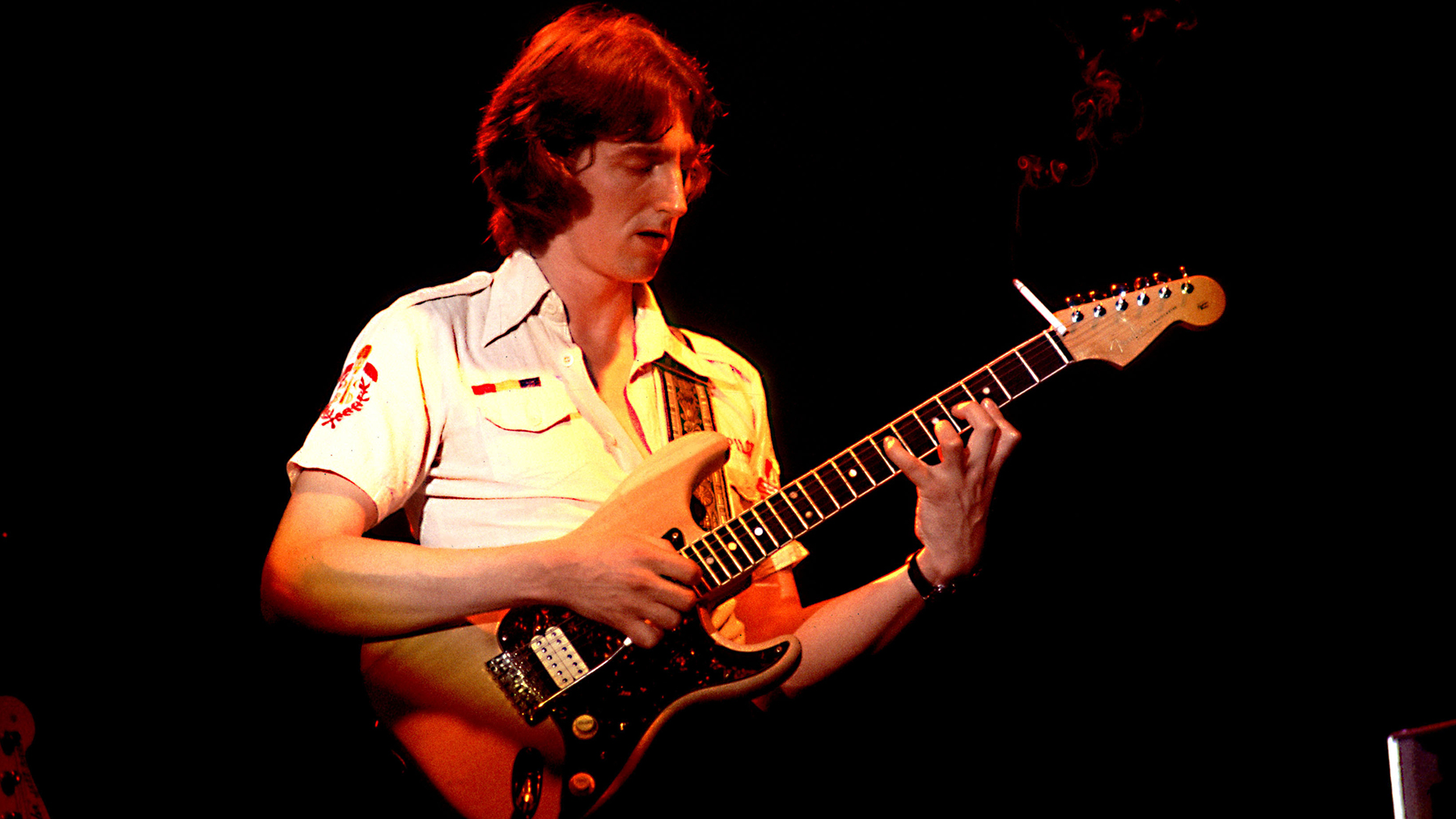
In 1980, Allan Holdsworth — a veteran of U.K., Bill Bruford, Tony Williams and Jean-Luc Ponty — formed his groundbreaking quartet, I.O.U. He described the band's music in the December '80 Guitar Player as having "some elements of jazz and rock, but we try not to be overly tricky."
Compared to what? The music on the band's '82 debut, I.O.U., was teeming with modulating time signatures and circuitous chord progressions — in other words, tricky. Holdsworth's unique style featured clarion-toned, legato solos and a unique chordal approach. Only guitarists with brave hearts and pliant hands worked their way through Holdsworth's '85 book of compositions Reaching for the Uncommon Chord.
Holdsworth began looking to guitar synths for new sounds around '85, but because he was prone to playing blazingly fast, synth controllers could barely make sense of what his hands were doing. He eventually found that the Synth-Axe could keep up, and he featured the instrument prominently on his '86 album, Atavachron.
KEY TRACKS "Devil Take the Hindmost," "Panic Station," "Road Games," "Three Sheets to the Wind," "Where Is One"
1980s GEAR Custom Charvel single-humbucker electrics, Ibanez AH-10, SynthAxe, various amps (including Hartley-Thompson, Pearce, Fender and Sundown), Steelmaster volume pedal, Yamaha E-1010 analog delay, two ADA STD-1 stereo tapped delays (one for clean tones, one for dirty). — AL
Eric Johnson

Like Roy Buchanan and Danny Gatton, Eric Johnson initially gained prominence as a result of other guitarists singing his praises. Steve Morse, Stevie Ray Vaughan, Johnny Wffiter and Billy Gibbons were among those who raved about Johnson in interviews. Not a prolific recording artist, Johnson developed his legendary rep based on a radical '84 Austin City Limits performance and the 1986 album Tones, his only release of the decade.
With a rocker's ears, a cellist's hands and an alchemist's curiosity, Johnson forged a signature sound from fluid, multi-octave arpeggios, buttery bends, cascading pentatonic runs, and chimey, close-voiced harmonies. He proved that one could coax sweet, violin-like sustain from a Strat while cruising up and down its fretboard with flawless intonation. It was Johnson who got guitarists thinking about cable impedance and directionality, the timbral differences between germanium and silicon transistors, and carbon-zinc and alkaline batteries. While the rest of the planet was exploring the multichannel amp, he perfected the triple-amp rig. By making us aware of each element in the signal chain, Johnson elevated electric guitar tone to a science.
KEY TRACKS "Cliffs of Dover," "Soulful Terrain," "Rail of Tears"
1980s GEAR '54 Fender Shut, two Fender Twin Reverbs (driving an open-back Marshall 4x12 cab), Dumble Steel String Singer, Dumble Overdrive Special, 100-watt Marshall heads driving Marshall 4x12 cabs, Ibanez TS-9 Tube Screamer, Paul C's Tube Driver, TC Electronic Sustainer, Electro-Harmonix Deluxe Memory Man, Echoplex — AE
Mark Knopfler
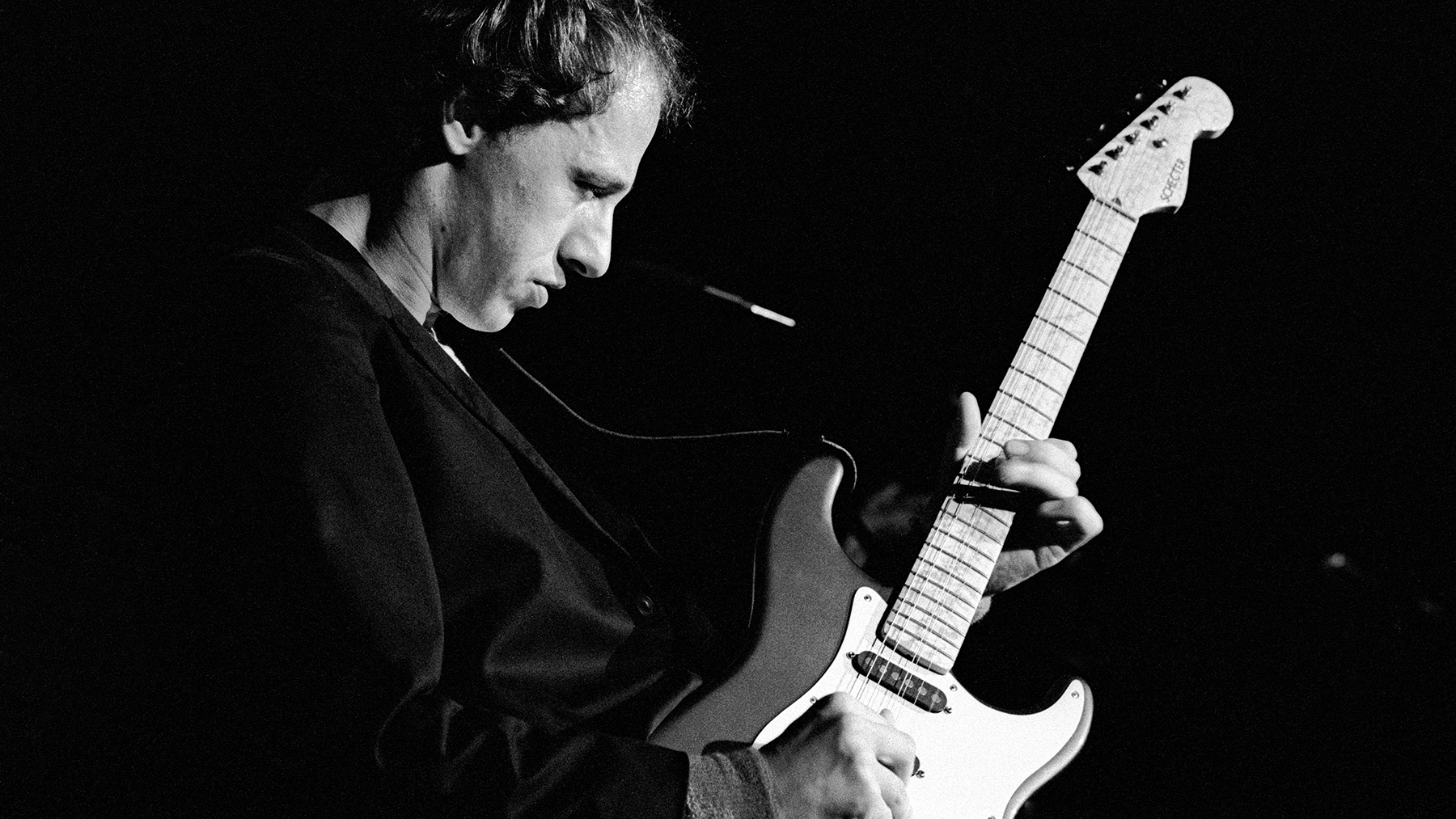
Using phasoidal Strat tones, poignant bends and snarky double-stops, Mark Knopfler established himself in the late '70s as a soulful and melodic player — and one who preferred to pick with his fingers! But in '85, with the release of Brothers in Arms, Knopfler and his band Dire Straits hit the musical jackpot. In addition to scoring massive worldwide sales, the album provided Knopfler an opportunity to stretch out as an arranger, songwriter and ensemble leader. His guitar tones expanded to include throaty Les Paul riffs and darker, distorted Strat lines, and he began to explore extended themes involving guitar, keyboards and woodwinds. Released when many listeners were buying their first CDs, Brothers in Arms also became an audio benchmark.
Even today, many engineers use tracks from this beautifully focused recording to fine-tune stage and studio sound systems. Many of Knopfler's new musical ideas emerged from his film scoring experiences, which began in '83 with the magical soundtrack to Local Hero. Cal, The Princess Bride, and Last Exit to Brooklyn followed.
No other guitarist has so successfully combined the twin careers of solo artist and film composer. For Knopfler, each discipline strengthens the other: His albums have become timbrally richer and more thematically complex, and his scores have benefited from his soaring solos and tinkling resonator guitar work.
KEY TRACKS "Brothers in Arms," "Going Home," "Money for Nothing," "Walk of Life"
1980s GEAR Strat-style Schecter with Seymour Duncan pickups, Strat-style Pensa-Suhr with EMG pickups, '53 Gibson Super 400, '58 Gibson Les Paul, '36 Style "0" National, Ovation Adamas, Gibson Chet Atkins solidbody classical, twin 100-watt Soldano heads driving two EV-loaded 4x12 Marshall cabs, rackmounted CryBaby wah, Ernie Ball volume pedal — AE
Steve Lukather
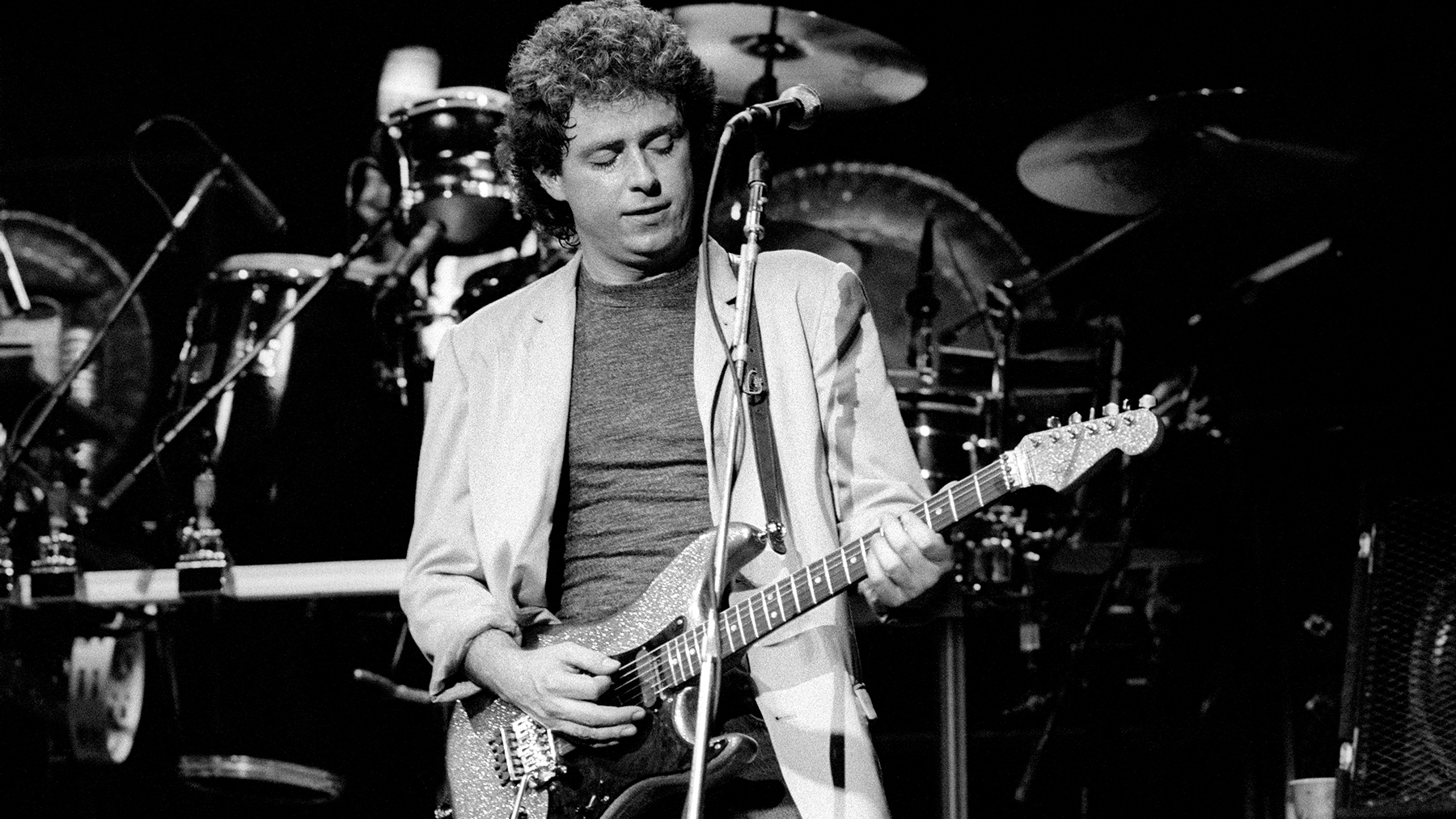
In every decade there's an elite group of studio guitarists who seem to get all the top sessions. In the '70s, it was Larry Carlton and Louie Shelton. In the '90s, Michael Landau, Tim Pierce and Brent Mason ruled the roost.
But in the '80s, it was Steve Lukather. His Reagan-era credits include albums by Eric Clapton, Stevie Nicks, Aretha Franklin, Michael Jackson, Don Henley, the Nitty Gritty Dirt Band, Joni Mitchell, Manhattan Transfer, Paul McCartney, Chet Atkins and many others. His tight chord work and tasty-yet-muscular solos helped sell literally hundreds of millions of records.
Lukather also had success with his own band Toto — particularly with the 1982 release Toto IV, which enjoyed multi-Platinum sales, hit singles and a sweep of that year's Grammy awards. Through it all, Luke has remained a regular guy who is just happy to play guitar. "I know I'm very lucky," he told GP in June 2000. "I've had the chance to work with all my heroes. My career is a dream come true."
KEY TRACKS 'Africa," "Rosanna" (with Toto). "Dirty Laundry" (with Don Henley). "Running with the Night" (with Lionel Ritchie). "She's a Beauty" (with the Tubes)
1980s GEAR '63 Fender Strat, '59 Gibson Les Paul, Gibson 15, custom Ibanez electrics, Paul Rivera–modified 100-watt Marshalls and Fender Deluxes, Fender Concert Lexicon Prime Time delay, Eventide H910 Harmonizer, Roland SRE-555 Chorus/Echo, various Ibanez multi-effectors — MB
George Lynch
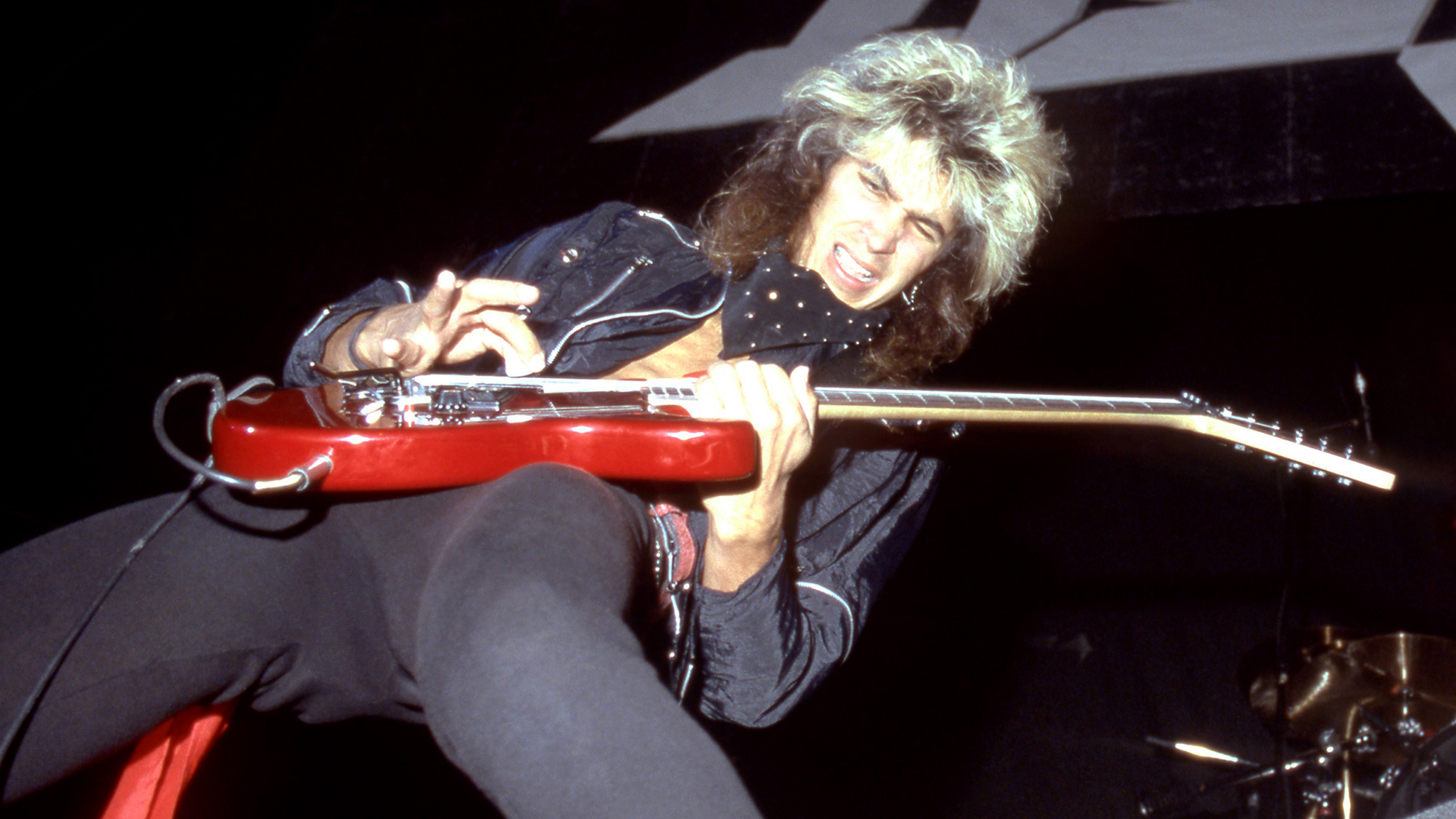
One of the original hot-shot LA metal players, Dokken guitarist George Lynch had chops to burn but always kept them in check with a tasty vibrato and keen sense of melody. When Randy Rhoads left his guitar teaching job for the Ozzy Osbourne gig, he insisted Lynch fill his shoes and take over his students. Not a bad referral.
The majority of Lynch's Aqua Net–glazed fury can be found in his super-charged solos. "I think a typical George Lynch solo should have melody and build to a climax," he told GP in 1986. "Speed is also important. People may get down on that, but it's impressive and it gives the solo energy" Aside from his stellar lead work, Lynch's wicked, tritone-laced riffing absolutely defined the hard rock "hair band" sound for the next several years.
KEY TRACKS "It's Not Love," "Lightning Strikes," "Mr. Scary," "Paris Is Burning"
1980s GEAR Various custom guitars (including Charvel, ESP, and Kramer solidbodies), Aria acoustic, vintage Marshall heads and cabs, Randall amplifiers — DF
Yngwie Malmsteen
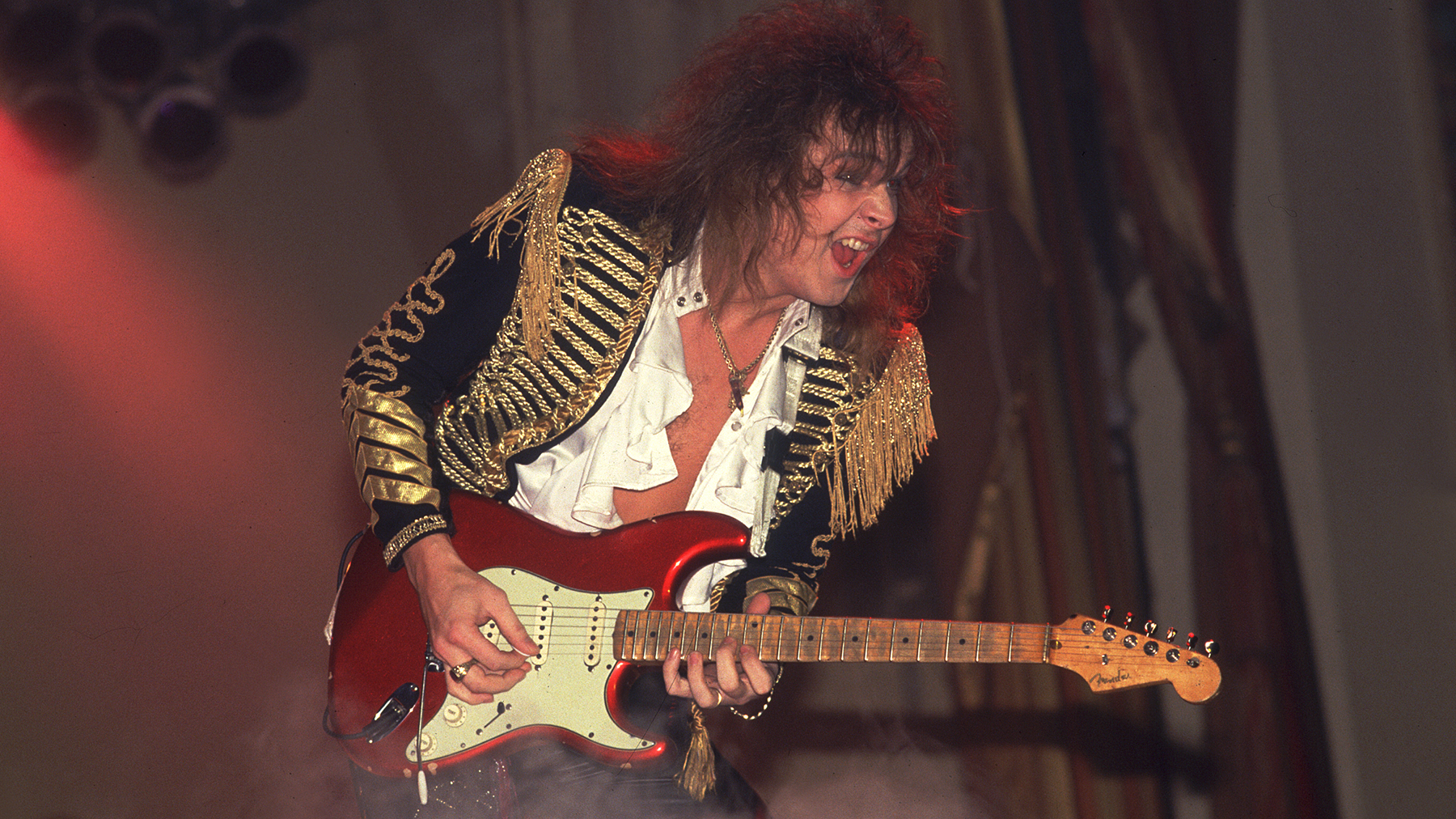
The Swedish shred king first hit our pages in Mike Varney's February 1983 Spotlight column. Soon after, Malmsteen came to the States and joined Hollywood metal-rockers Steeler. After working on their '83 album, Steeler, he quickly outgrew the band's limited scope and left to join Alcatrazz. His tenure didn't last long — after recording just one studio album, No Parole from Rock 'n' Roll, he left Alcatrazz to concentrate on his own band, Rising Force, where Malmsteen was finally able to realize his artistic vision.
With intricate original compositions — inspired by classical composers J.S. Bach and Nicolo Paganini — and extended-play solos, Malmsteen tolled the bell for all who had ears to hear: He was the new king of Shred Hill.
KEY TRACKS "Black Star," "Evil Eye," "Far Beyond the Sun" "Icarus' Dream Suite," "Marching Out."
1980s GEAR 1969 Fender Stratocaster (and other Strats of similar vintage, all with scalloped fingerboards), modified 1971 Marshall 50-watt heads, Marshall 4x12 cabinets (with Celestion G-65 speakers), DOD Overdrive Preamp 250, Korg SDD-1000 rackmount digital delay, Fender extra-heavy picks ("I couldn't play with anything else,' he said in the May '85 GP) — AL
Johnny Marr
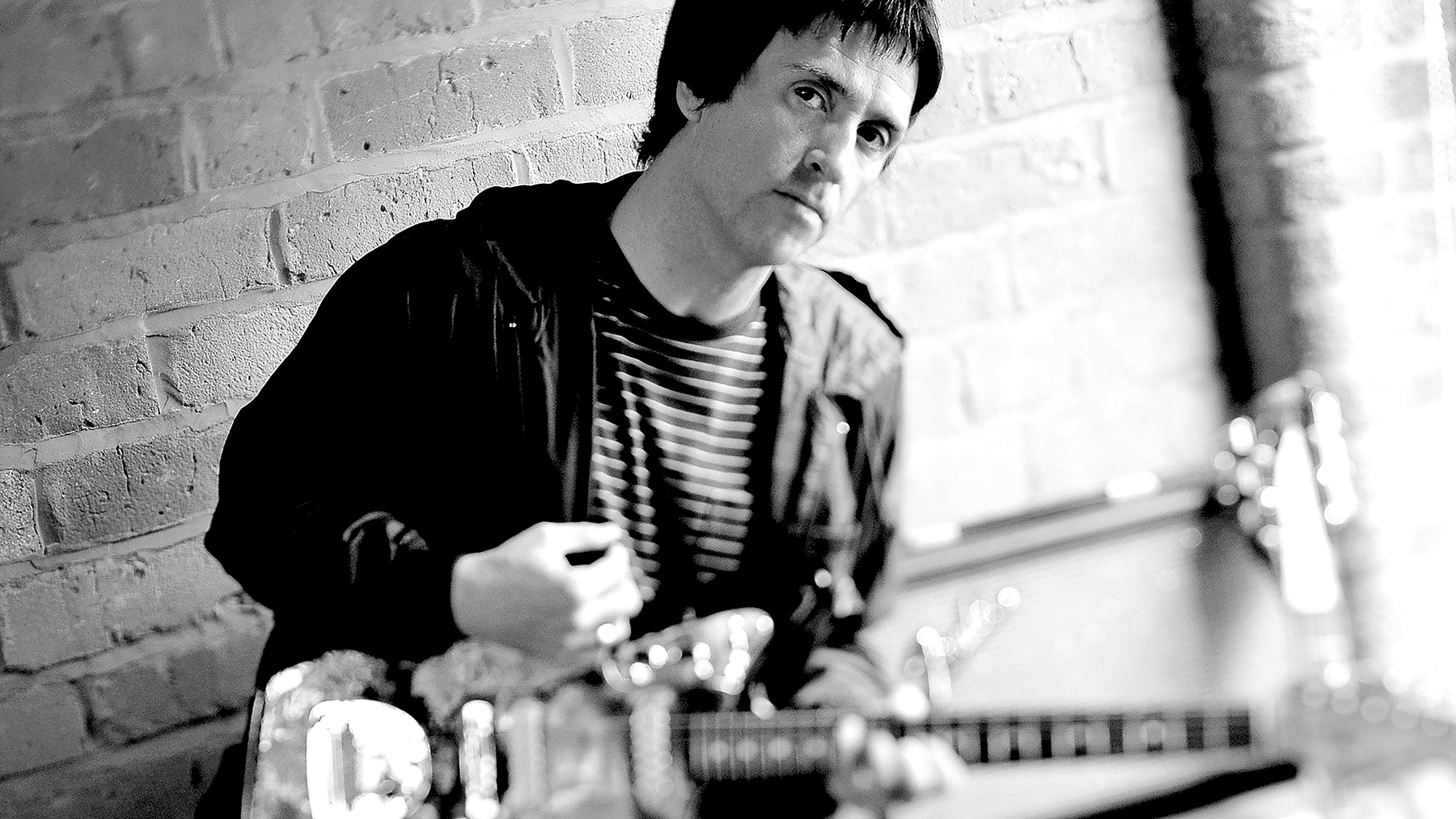
Armed with a huge palette of tones and a savvy sense for turning oddball chord sequences into hit
songs, the Smith's Johnny Marr forged a guitar style that incorporated '60s primitivism, '70s funkiness
and gobs of Byrds-style chime. Two of the many things that set him apart from his '80s-era contemporaries were his disdain for guitar solos ("I like improvisation in the right place, but I find most solos corny") and his natural ability to create unique clashes by superimposing major and minor modes. "I use a thumbpick,” he told us, “because when you have all five fingers going, your fingers go to progressions you don't even know you're doing.”
Marr's bright, jangly tones always sounded huge without the benefit of distortion, and his spine-chilling slide intro on the pulsating "How Soon Is Now" remains one of the most distinctive guitar sounds ever recorded. Following the breakup of the Smiths in 1987, Marr appeared on albums by the Talking Heads, the Pretenders, Electronic, The The, Paul McCartney, Kirsty MacColl, Bryan Ferry and others.
KEY TRACKS "How Soon Is Now?,” "This Charming Man," "What Difference Does It Make?,” “The Headmaster Ritual," "The Violence of Truth"
1980s GEAR Epiphone Casino, Fender Strat, Gibson ES-335, Gibson Les Paul, Martin D-28, Rickenbacker 330, Fender Bassman, Fender Showman, Fender Twin Reverb, Mesa/Boogie Quad Preamp, Roland JC-120, Dunlop Cry Baby wah, Eventide Harmonizer, Roland GP-8, T.C. Electronic 2290, Yamaha GEP50 — AT
Prince
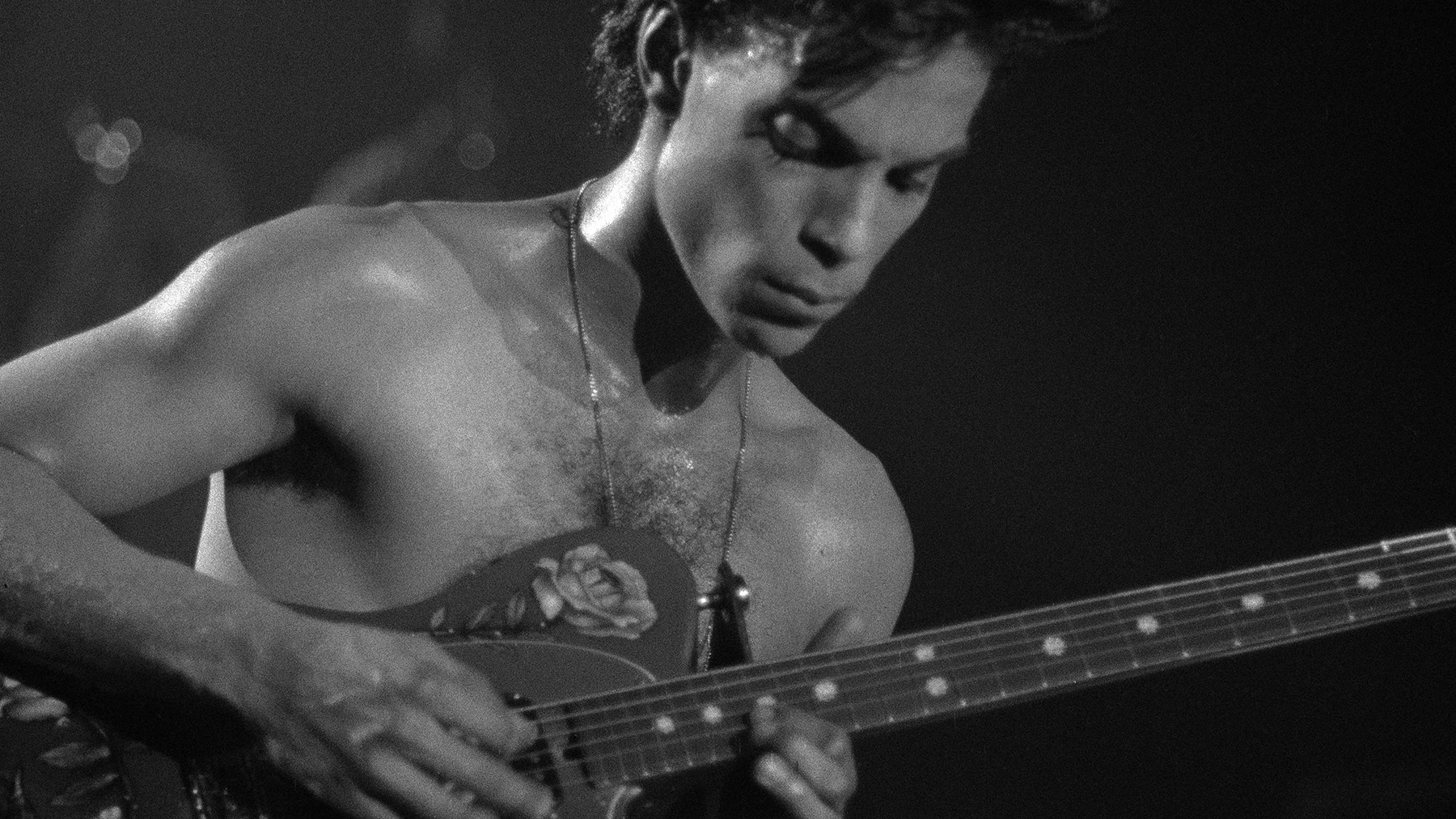
It's difficult to find an '80s artist more prolific or cutting-edge than Prince, who ushered in the decade with the release of Dirty Mind. On this record of slamming funk rhythms and catchy melodies, Prince was credited as playing guitar, bass, drums and keyboards — as well as singing, producing, arranging and writing all the tunes.
Controversy followed in '81, but it was his '83 album, 1999, that gave him his first taste of superstardom. The infectious title track, with its sinewy chord stabs and slippery wah figures, became an instant classic. Prince's dry, in-your-face rhythm parts set the standard for funk rock in the '80s. Purple Rain took things higher still, with strong tunes and even bolder guitar work. His trademark funk rhythms abound on Purple Rain, but it was the blazing solos on tunes such as "When Doves Cry" and "Let's Go Crazy" that turned guitarists' heads. With over-the top distortion, squealing feedback, and a flamboyant persona (that drew on Hendrix, Little Richard and James Brown influences), Prince the Guitar Hero had arrived.
Prince would go on to release six more albums in the '80s, changing stylistic gears with each record. This incessant self-reinvention confused and alienated some fans, but many of them were brought back into the fold with 1987's Sign O’ the Times, which showed Prince's heavier side (on the title track), as well as his pop stylings ("I Could Never Take the Place of Your Man" and "U Got the Look").
KEY TRACKS "Baby I'm a Star," "Sign O’ the Times," "When Doves Cry" "I Would Die 4 U," "1999"
1980s GEAR Fender Telecaster, Hohner Tele copy, Mesa/Boogie amps, Boss pedals — MB
Trevor Rabin
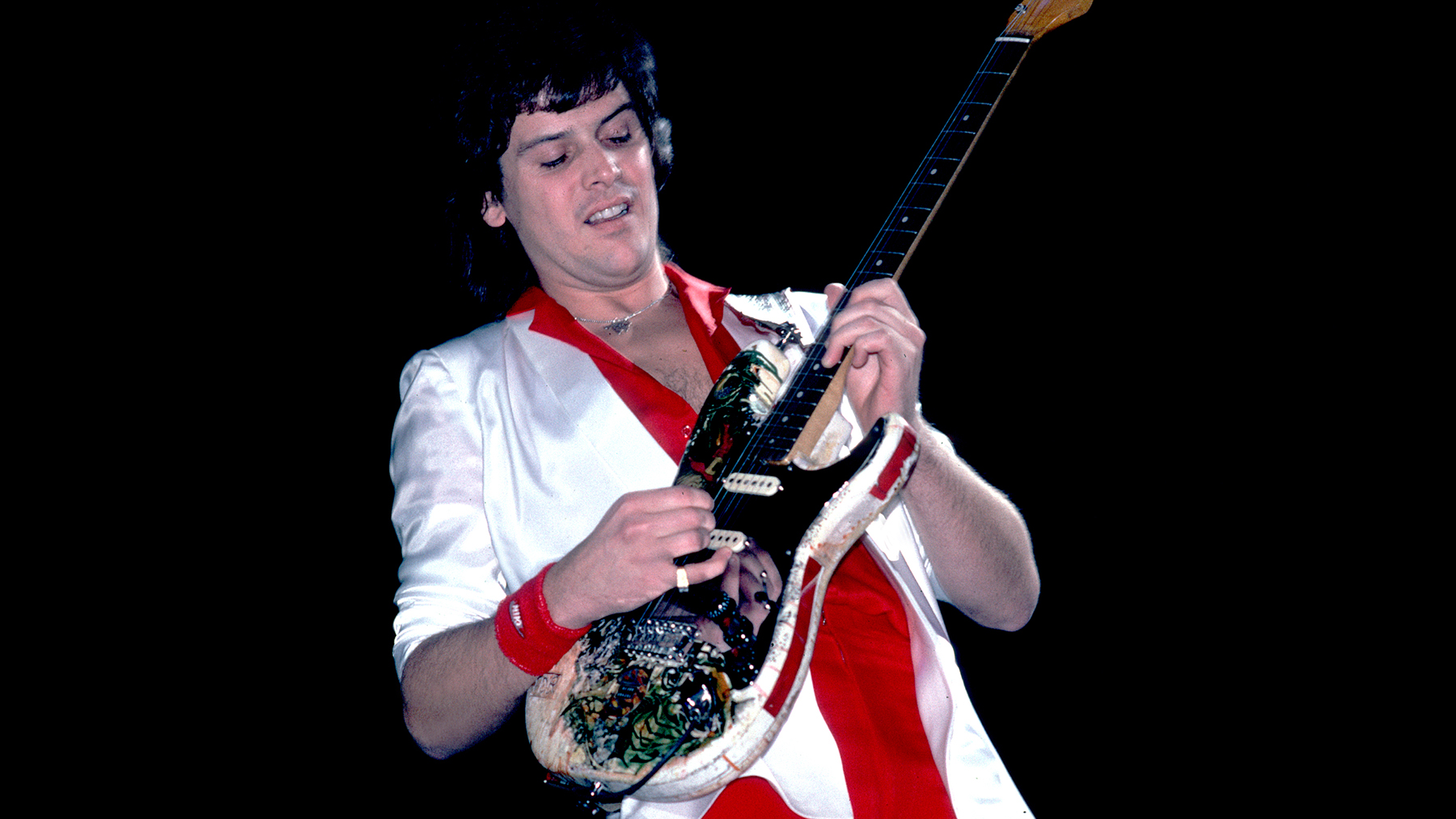
Seminal prog-rock band Yes had apparently seen the rising and setting of its sun in the 1970s, with nine albums and several hits (including "Roundabout," "Long Distance Runaround" and "Yours Is No Disgrace"). Then, just as 1983 was winding up, South African guitarist/vocalist/producer Trevor Rabin brought his cache of songs to founding members Chris Squire (bass) and Jon Anderson (vocals), and resurrected Yes with the smash 90125, an album rife with slick production, radio-friendly hooks and tactile, layered guitars. Although Rabin's harmonized leads are arguably the most memorable color of his tonal spectrum, his inventive use of modern gear proffered a wealth of tones — from super-compressed clean to crunchy to sweetly sustaining. Even his acoustic guitar tones were amazingly distinctive. In short, Rabin's command of tonal shades proved him to be both a brilliant texturalist and a fiery lead player.
KEY TRACKS "Changes," "Hearts" and ”Owner of a Lonely Heart" (with Yes). "Can't Look Away," "Etoile Noir" (solo)
1980s GEAR '62 Fender Stratocaster (with Seymour Duncan stacked humbuckers and Schaller tuners), two Ernie Ball volume pedals (one for regular volume, one for echo volume), and various MXR pedals (including a Pitch Transposer, a Dyna Comp, a 10-Band graphic EQ, an analog delay, a Distortion+, a flanger and an envelope filter), MXR 15-band EQ and digital reverb rack units, Roland SRE-555 Chorus/Echo — SH
Vernon Reid
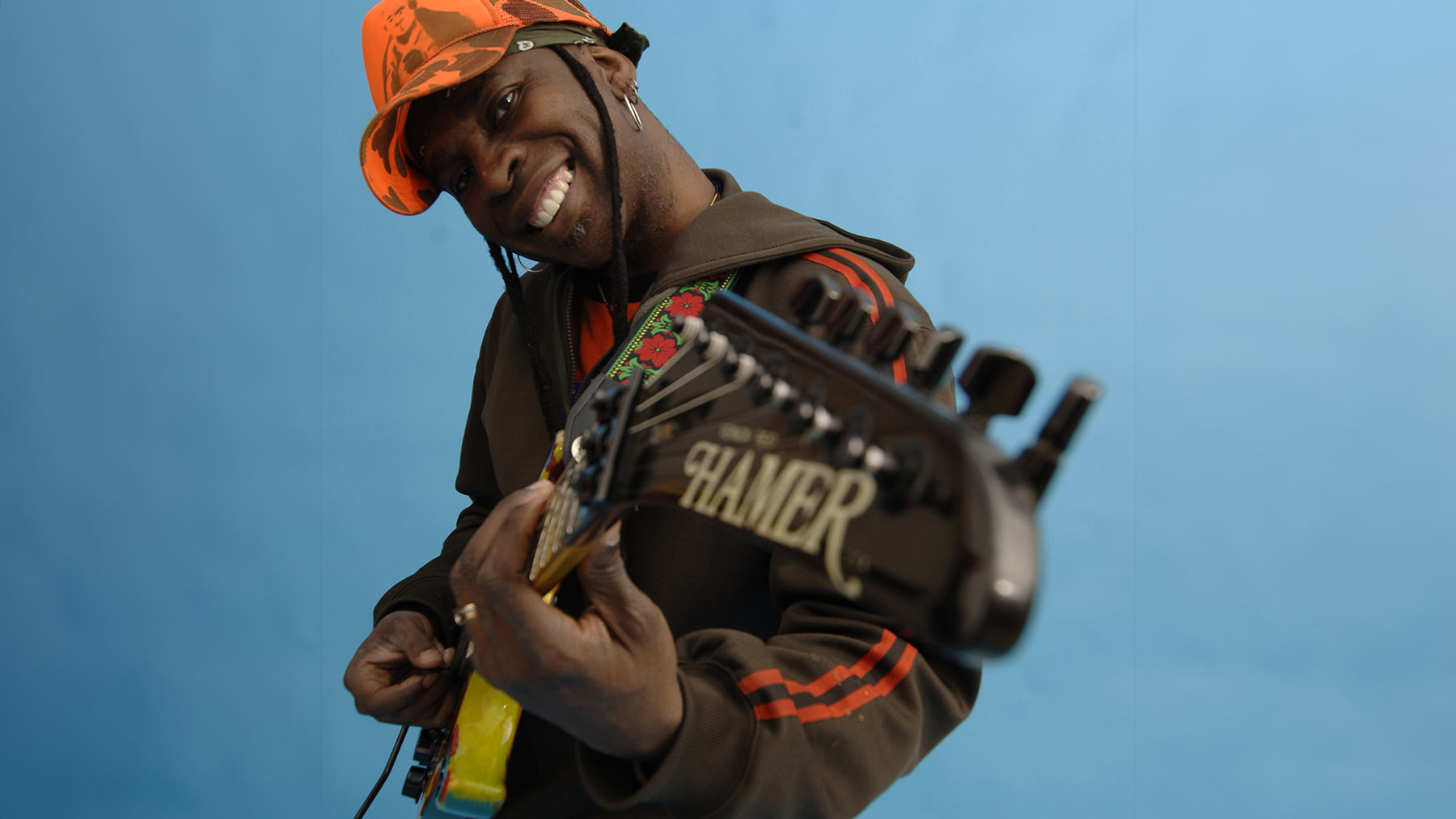
Besides blurring color lines as one of the few all-black hard rock bands on the scene, Living Colour launched a whole new sound with their ingenious blend of funk, avant-garde jazz and metal. Guitarist Vernon Reid's massive, Zeppelin-influenced rifling, grinding dissonance, and furiously chromatic solos were masterfully balanced with slithering dance grooves, complex chording and adventurous use of new technology, including samplers and guitar synths, that he combined with his ESP and Hamer Superstrats.
KEY TRACKS "Cult of Personality," "Glamour Boys," "Middle Man," "Open Letter to a Landlord"
1980s GEAR Hamer Chapparal and ESP Strat-style guitars with Floyd Rose tremolos and EMG pickups (two single-coils and a humbucker), Cry Baby wah, Korg volume pedal, Roland GP-8, DigiTech DSP-128, Dean Markley CD-120 1x12 combo and Fender Dual Showman head driving Fender 4x12s, Mesa/Boogie Quad Preamp and Strategy 400 power amp, ADA MP-1, Boogie 4x12 cabinets — SH
Randy Rhoads
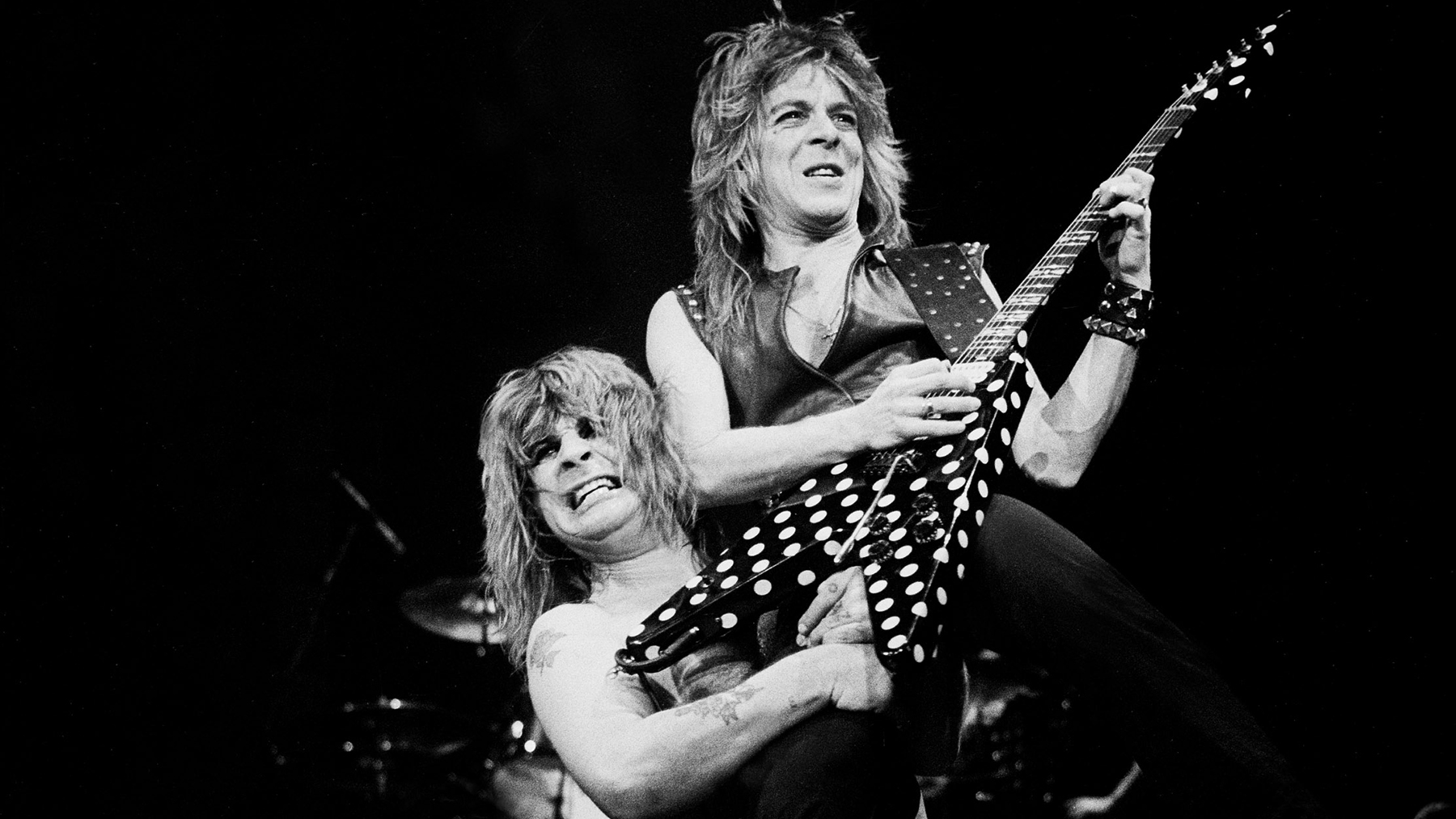
Many thought Ozzy Osboume's career was finished when he was fired from the pioneering heavy metal band Black Sabbath in 1978. However, thanks to his discovery of the brilliant, classically trained guitarist Randy Rhoads, Osbourne emerged triumphant in 1980 with Blizzard of Ozz — an album that is still regarded as one of metal's finest. As one of the few hard rock guitarists of the early '80s who didn't jump on the Van Haien bandwagon, 22-year-old Rhoads introduced the world to a distinctive tone and unmistakable style that bristled with blinding pull-off licks, staccato rhythms, and chromatic solo flurries. Despite a sparse discography, Rhoads has gone down in history as one of heavy metal's most original guitarists.
KEY TRACKS "Crazy Train," "Dee," "Flying High Again," "I Don't Know"
1980s GEAR Gibson Les Paul, custom V-shaped electric with DiMarzio pickups, Grover Jackson–designed shark’s-fin guitars equipped with Seymour Duncan pickups, Dunlop Cry Baby, Korg delay, 100- watt Marshall heads through Marshall 4x12 cabinets with Altec speakers, MXR Distortion+, EQ, chorus, and flanger pedals — SH
joe Satriani
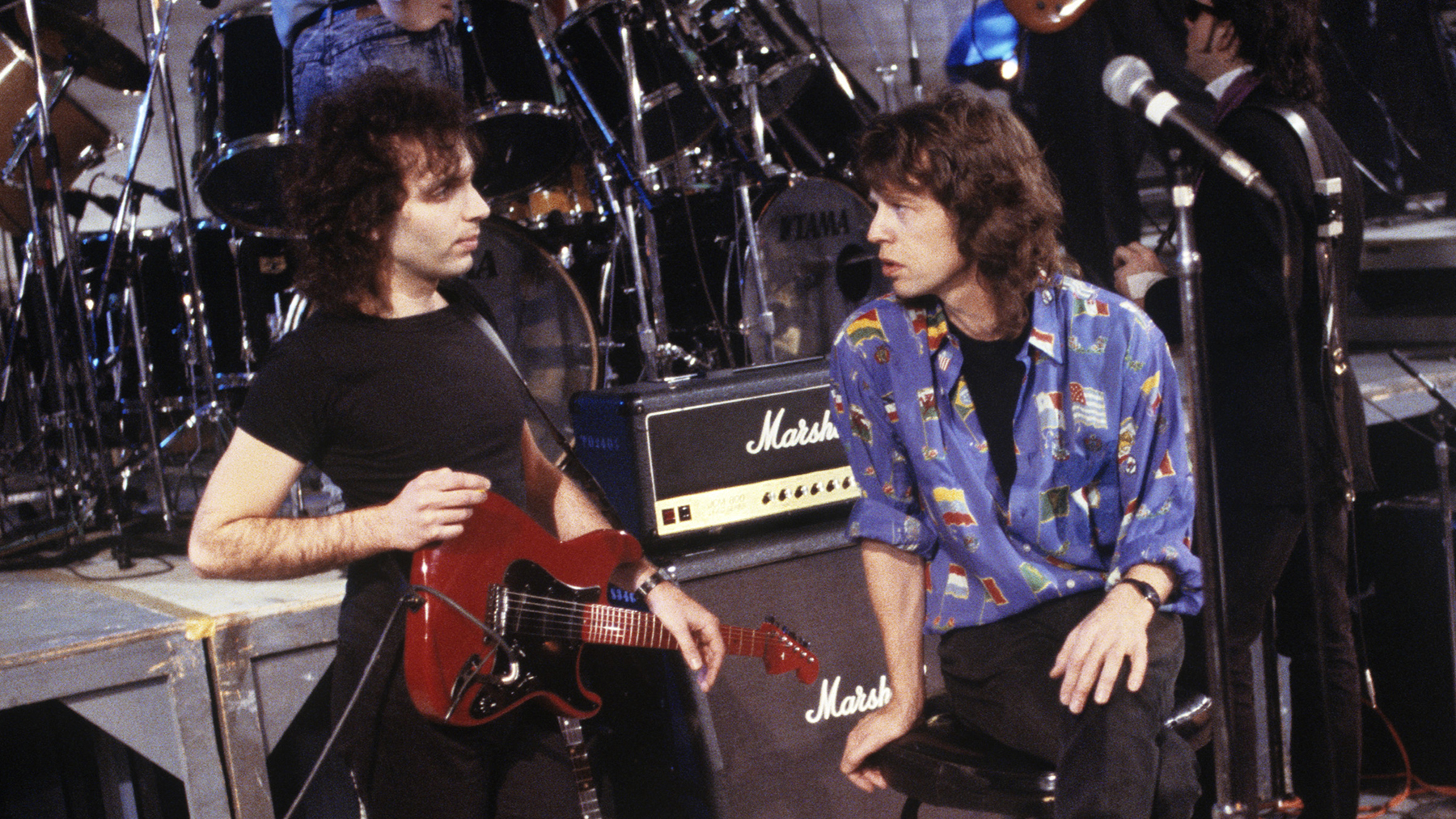
In the early '80s, Joe Satiani was a guitar teacher in Berkeley, California, with a couple of band projects and some sessions under his belt. By 1987, he was on the cover of every guitar magazine in the world, thanks to Surfing with the Alien.
With dazzling technique, high-energy tunes and extreme guitar tones, Satch proved that all the rumors of his greatness (some of which were started by his former student, Steve Vai) were true. And he did something that very few guitar heroes have done — sell records.
Surfing was a smash hit with guitarists and non-guitarists alike, and Satriani would enjoy further success with his subsequent releases and tours. He was also picked by Mick Jagger to go on the road and cover parts originally played by Keith Richards and Jeff Beck.
Looking back on his debutante decade, Satch told us, "Making the transition from giving lessons in the back of a store to being the Surfing with the Alien guy and Mick's lead guitarist was a completely mind- and life-altering experience."
KEY TRACKS "Circles," "Hordes of Locusts," "Ice 9," "Mystical Potato Head Groove Thing," "Satch Boogie"
1980s GEAR Homemade Strat-style guitars, Ibanez solidbodies, 100-watt Marshall amps, Scholz Rockman, Echoplexes, Boss CE-1 chorus — MB
Neal Schon
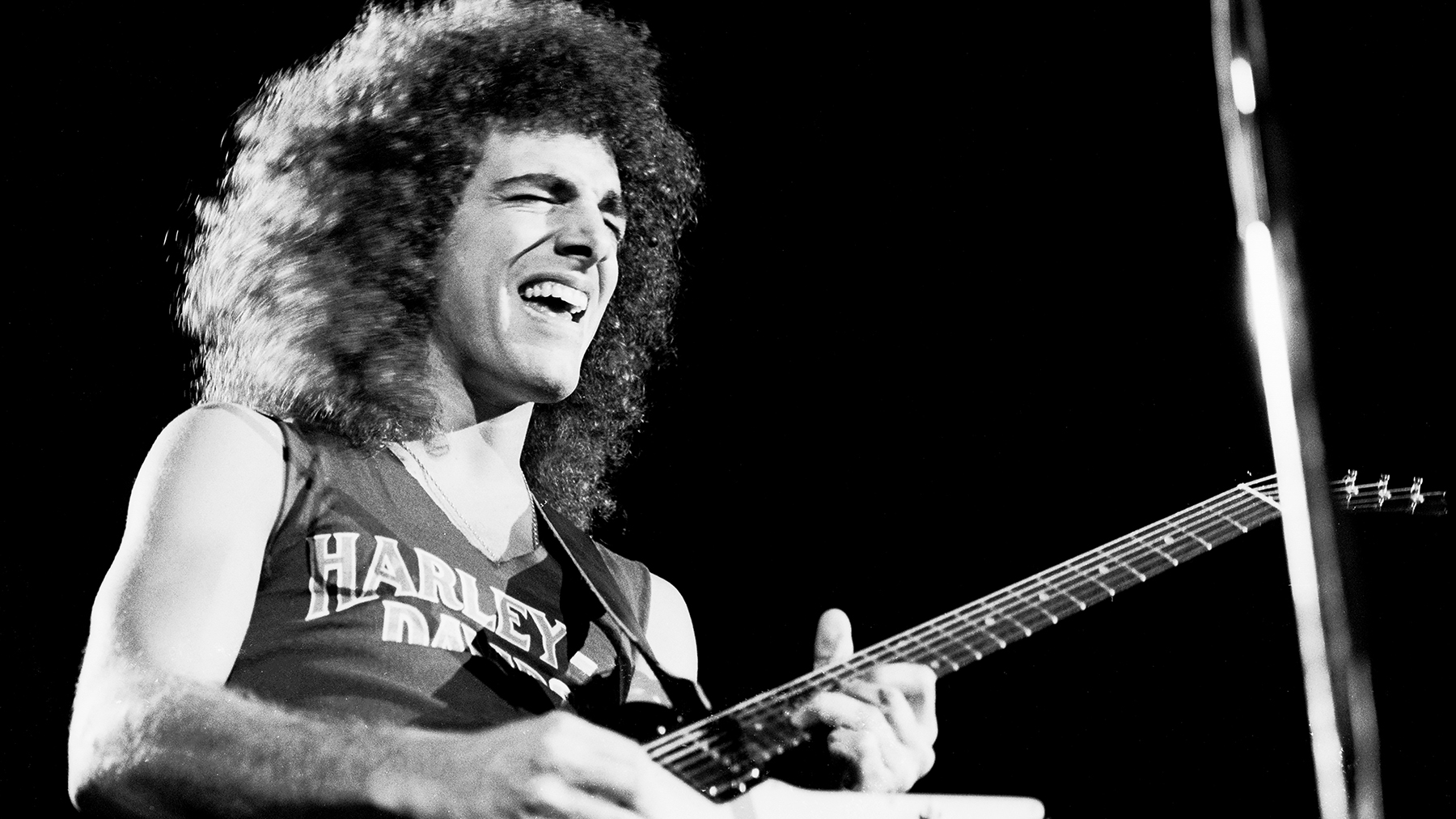
As a teenager in 1970, Neal Schon achieved Northern California royalty status by joining Carlos Santana's band. A couple of years later, Schon formed his own group, Journey, which became increasingly popular with its Santana-esque brand of jam rock. At the close of the '70s, however, Journey found their winningest formula when they added vocalist Steve Perry and moved in a more pop-rock direction. When the '80s rolled in, Schon was the guitarist — and one of the chief songwriters — of a veritable hit machine.
What set him apart from most other popsters of the decade, however, was his stellar guitar work. Schon's punchy, intricate rhythm parts — and his soaring leads that blended melodicism, dynamics and fiery chops — earned him unshakeable street cred among guitar freaks. His two albums with keyboard god Jan Hammer further cemented his rep as a player, making him the first choice as a jam partner when guitarists such as Gary Moore, Eddie Van Haien and Jeff Beck came to town.
KEY TRACKS "Walks Like a Lady" "Stone in Love," "Girl Can't Help It" (with Journey). "I'm Down," "No More Lies" (with Jan Hammer)
1980s GEAR 1963 Fender Strat, Gibson Les Pauls, Aria Pro II, various amps (including Peavey Mace, Fender, Marshall and Mesa/Boogies), Electro-Harmonix Hot Tubes — MB
John Scofield
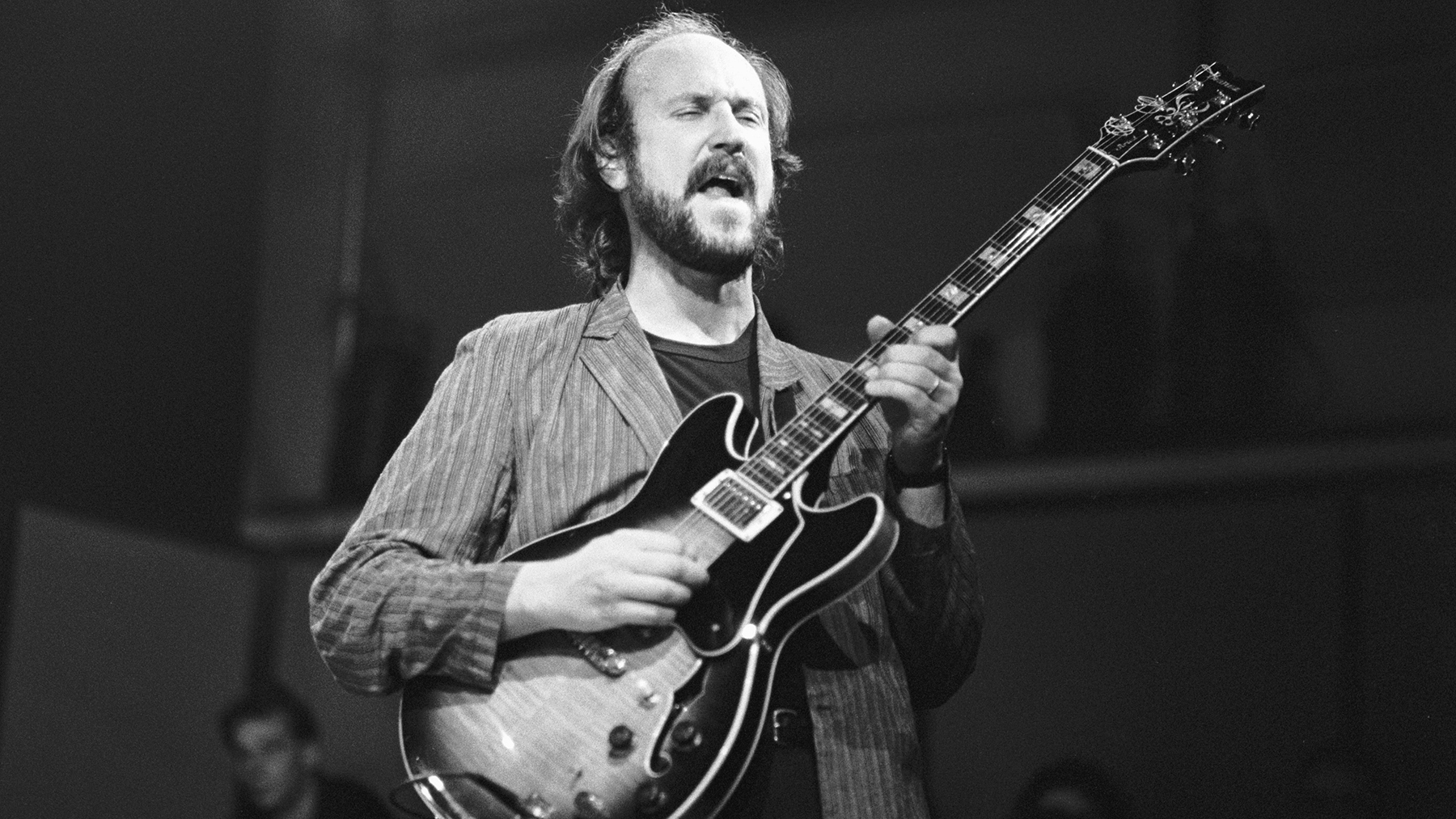
Celebrating his blues and funk influences — and attacking the electric guitar as a truly electric instrument,
with bluesy bends and chorus-tweaked tones — John Scofield brought an earthy vibe to jazz's heady mindset. He was also one of the '80s most versatile jazz guitarists, performing with Miles Davis, pianist McCoy Tyner and the French National Orchestra.
"One thing I learned from Miles Davis," Scofield said in '84, "is not to be afraid to play what you hear. In other words, just play what you feel. Miles was a master of the fine art of letting things happen naturally"
Scofield spent much of the '80s expanding the progressive ideology that began with his Davis tenure by working with contemporary jazz-funk rhythm sections. Then in 1989, he bid the decade farewell with Time on My Hands, a stinting return to the acoustic jazz realm.
KEY TRACKS 'All the Things You Are," "Pick Hits," "Techno," "Who's Who" (solo). "What It Is" (with Miles Davis)
1980s GEAR Gibson ES-335 and ES-175, Ibanez Artist AS-200, Polytone Mini-Brute IV, Music Man 410-HD, Sundown amps, Ibanez stereo chorus and stereo reverb, Pro Co Rat, Boss Octaver — MM
Brian Setzer
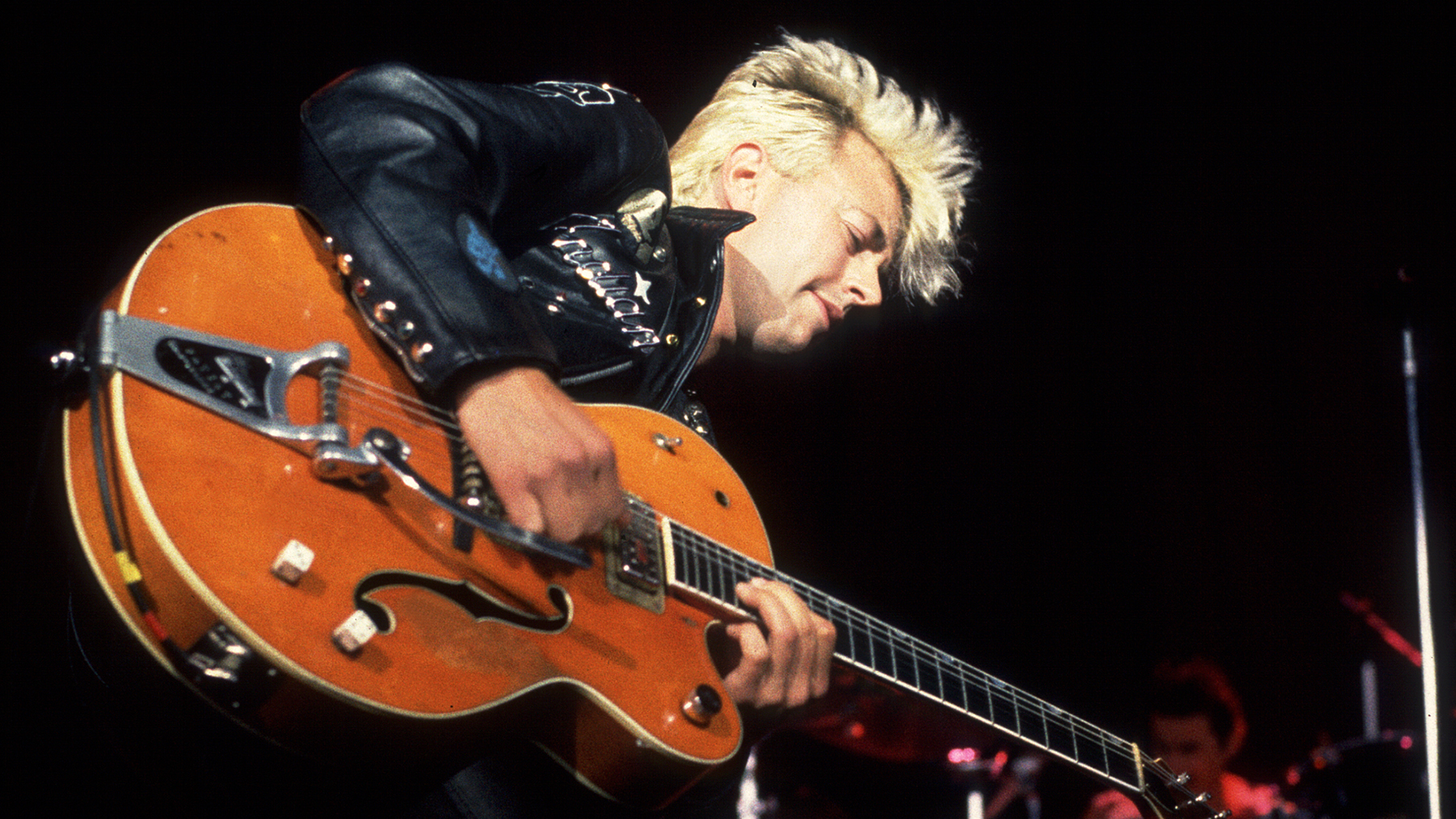
They had the look, the attitude and the wild-boy flash of rockabilly rebels, but while MTV pumped up the fashion factor for video fanatics, the Stray Cats were more than mere cartoons. Credibility came howling from Brian Setzer's Gretsch 6120, with a lead style that honored the genre's heroes while simultaneously nudging rockabilly into uptown duds. Setzer was channeling Django Reinhardt and other jazz greats along with hellraisers such as Carl Perkins, Cliff Gallup and Paul Burlison.
"When I first heard Cliff Gallup," said Setzer in the September '83 Guitar Player, "he was kind of what I wanted to be — a jazzy rockabilly player. He really sent me."
But while Setzer's head was sometimes transcending rockabilly conventions, his tones were totally true blue. "I use the middle-pickup position on my Gretsch," he explained in '83. "I usually turn the presence up full on my Bassman, and the volume to about four or five — just to the point where it's about to distort. The volume is so low, I could play in my bedroom and it would be fine. I usually put the bass around five, and the treble up to eight. I set the echo for one repeat almost directly after the original note — bop, bop. It's pretty tight."
Shooting the Cats beyond the tattoos and haircuts of lesser rockabilly contenders was the fact that Setzer was absolutely immersed in the style. He got it. "The early rockabilly stuff is basically a country guitarist trying to play rock and roll guitar — which is a mixture of black blues and white country" he said. "It's a feel. A lot of people put the cart before the horse. They think they've got to buy a '58 Gretsch and an old Fender amp. That stuff is great, but you've got to have the feel."
KEY TRACKS "18 Miles to Memphis," "Double Talkin Baby" "Rock this Town," "(She's) Sexy & 17," "Stray Cat Strut"
1980s GEAR 1959 Gretsch 6120 Chet Atkins, '60s blond Fender Bassman, NCR Analog Delay, Dean Markley strings (.010 or .011 set) — MM
Robert Smith
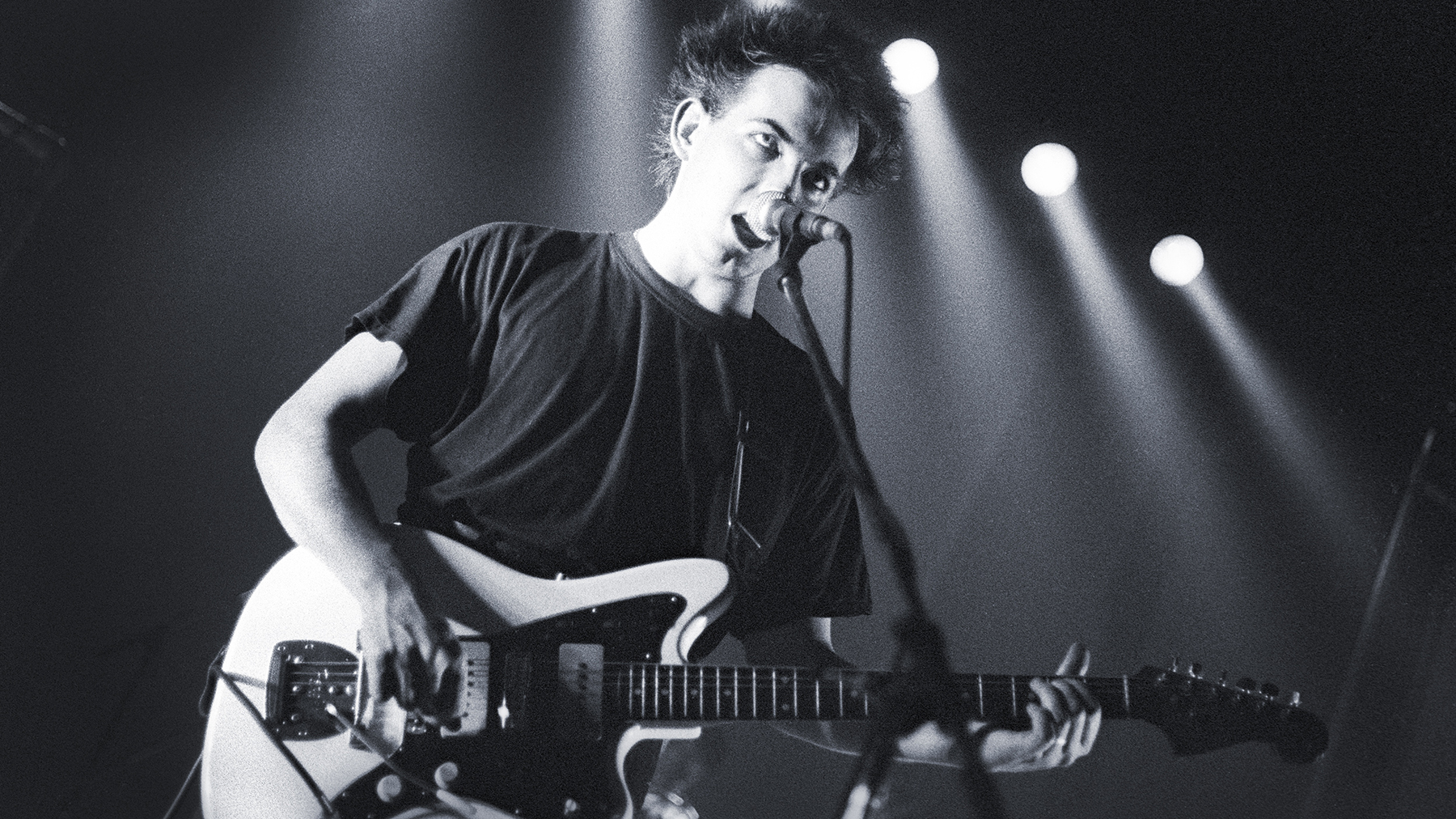
As main guitarist and visionary for what has been called "the world's biggest cult band," Smith graced the nine Cure albums released during the '80s with moody, multicolored guitar. Listen to what lurks behind any of the Cure's hooky vocal melodies and you'll likely find complex patterns of intersecting guitar parts that swirl around the main line to create an energetic and enticing backdrop.
Able to visualize the entire song during the recording process, Smith typically recorded all the guitars himself, adding depth and color to his six-string tapestries by incorporating open tunings and tracking each part with varying degrees of distortion and/or effects.
Alternative instruments also factored heavily into Smith's sonic sculpting. As he told GP in 1992, "The whole Faith album [released in '81] has six-string bass. I think when people talk about the 'Cure sound,' they mean songs based on six-string bass guitar, acoustic guitar and the Solina (a.k.a. the ARP String Ensemble)." One of Smith's more oddball studio tricks involved detuning each of his guitars' high E strings a few cents apart to create natural chorusing effects when the individual tracks were mixed together.
KEY TRACKS "The Blood," "Fascination Street," "Love Cats," "Other Voices "
1980s GEAR Fender Jazzmaster, Gibson Chet Atkins, Ovation six- and 12-string acoustics, '62 Fender Bass VI, Peavey amps, Dunlop Cry Baby, Boss pedals (chorus, delay, flange, phase, and overdrive) — AT
Steve Stevens
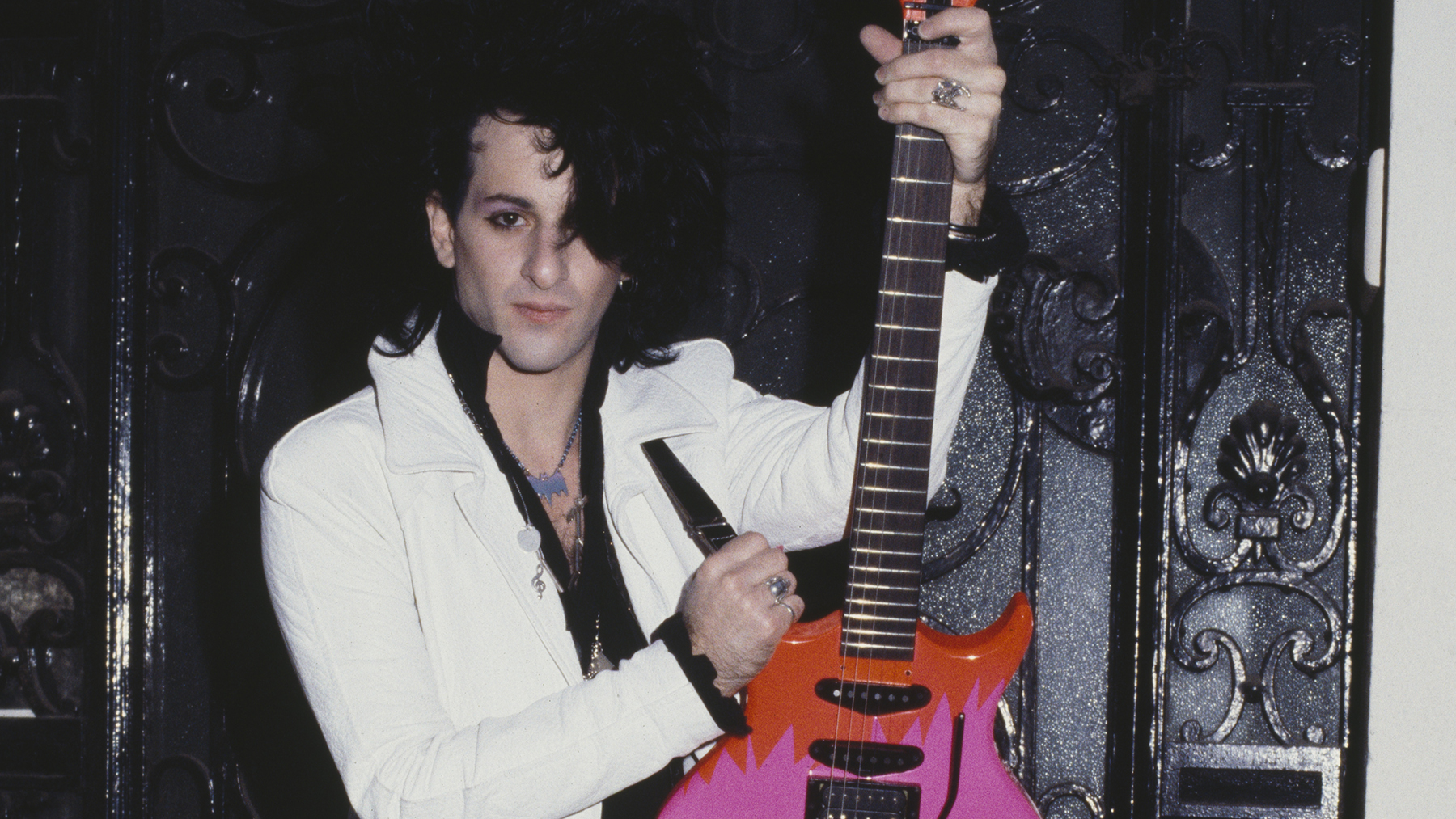
A central figure in Billy Idol's aggressive mix of punk, new wave, heavy metal and dance music, Steve Stevens wrote the book on balancing texture and technique. “I try to avoid the lead guitar-solo syndrome," he told GP in 1984. "My approach is more sonic than actual notes — if you have a really brilliant sound together, you don't have to play all that many notes."
Stevens elevated the songs he and Idol wrote into a realm that blurred the line between Ozzy-approved pyrotechnics and Bauhaus-style noise-art. Wielding short, fierce solos, feedback assaults, trem-bar antics and sci-fl-style sound effects, he furnished Idol's Rebel Yell with wall-to-wall guitar. But when the following release, Whiplash Smile, took a more techo-oriented turn, the guitarist decided it was time to get his own band together.
Stevens' inventive guitar playing resurfaced in full force on his 1989 solo debut Atomic Playboys, a release that gave Stevens the opportunity to indulge his hard-rock side, as well as his interests in R&B, pop-jazz, and John McLaughlin–style acoustic work. "I never wanted to lose the acoustic part of my playing," Stevens said. "I always loved the way that people like Robert Fripp, Steve Howe and Steve Hackett could be acoustic players, but also utilize effects."
KEY TRACKS: "Atomic Playboys" (solo). "Eyes Without A Face," "Flesh For Fantasy" "Rebel Yell," "White Wedding" (with Billy Idol)
1980s GEAR '53 Gibson Les Paul, Hamer Steve Stevens Signature, custom Suhr Strat-style, custom Jackson, Guild acoustics, Roland GR-700 synth, Marshall IMP and KM 800 heads, Vox AC30, Boss effects (CS-2 compressor, 0C-2 Octaver, CE-2 chorus), Vox Clyde McCoy and Cry Baby wahs, Pro Co Rat, Eventide 999 Harmonizer, Lexicon PCM-41 multi-effector, Maestro Echoplex, Roland rack effects (SDE-3000, SRE-555, Dimension D), Scholz Rockman — AT
Andy Summers
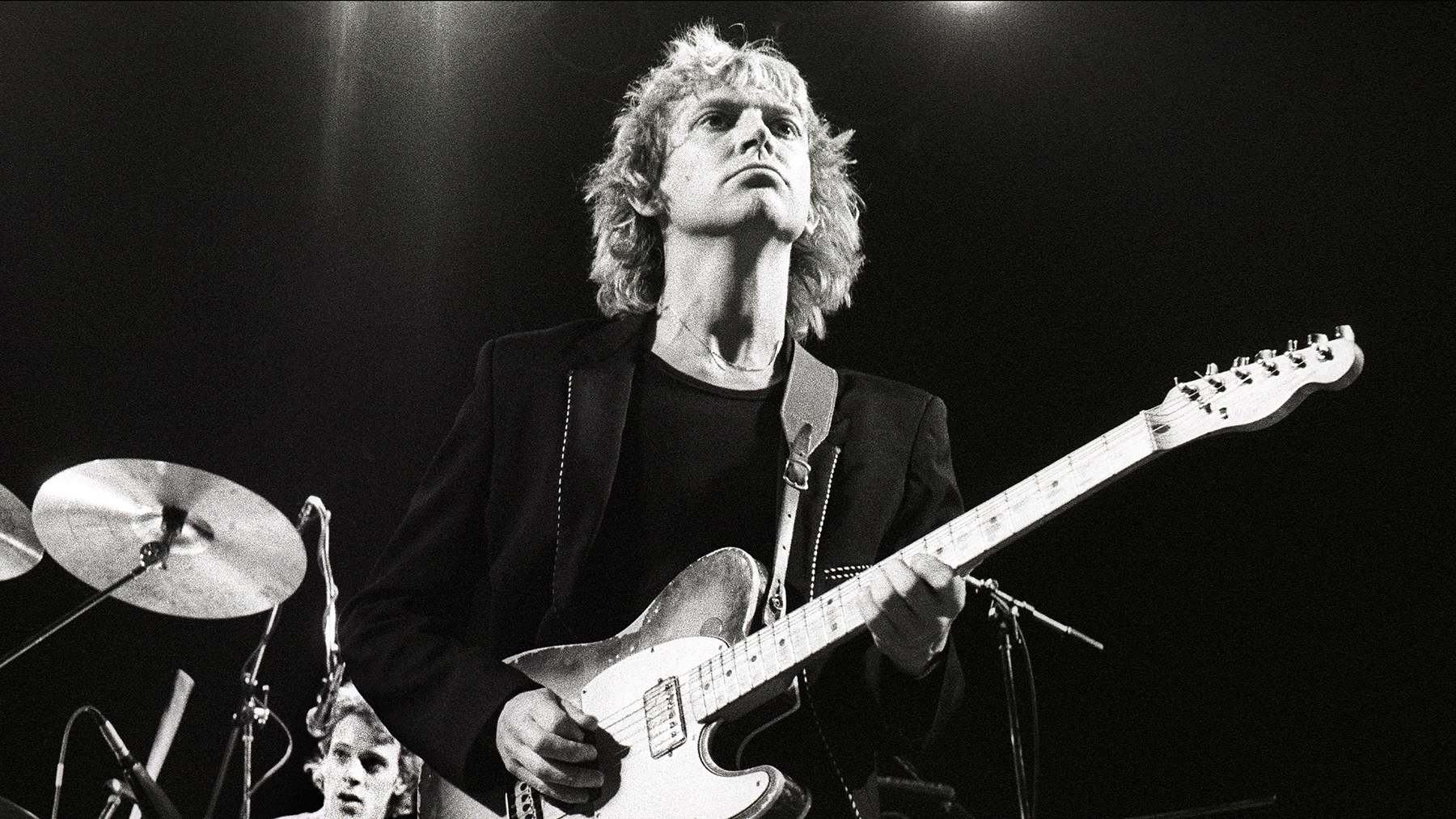
The Police launched in 1978 with the release of Outlandos d'Amour, and the band hit their stride in the early '80s with Zenyatta Mondatta and Ghost in the Machine. Vocalist/bassist Sting was the Police's chief songwriter, but Andy Summers had a more vital role in shaping the band's sound. His novel chord voicings, off-beat (in both senses) rhythm grooves, and shimmering chorus and delay-laden tones were essential to Police hits such as "De Do Do Do, De Da Da Da."
In the January 2001 issue of Guitar Player, Summers revealed that "procedure by negation" was the key to sculpting his unique guitar voice. "Back in my Police days," he said, "I thought, Everyone's still jamming on power chords. I don't want to do what everyone else is doing, so what am I left with?"
One thing Summers did to outstrip the Joneses was to avoid distortion or overdrive — except as a last resort. (The solo on "Driven to Tears" showcases his dirty side.) Another Summers-ism was to use add9 chords in place of standard barres and power chords. ("Every Breath You Take" is built almost entirely around major and minor add9 chords.) He also avoided the cliché of extended solos, favoring brief, personal anti-solos. (Check out his synthed-out breakdown on "Don't Stand So Close to Me.")
Ironically, Summers' innovations were embraced by legions of post-Police guitarists, rendering his specialties nearly as common as the generic affectations he sought to avoid.
KEY TRACKS "Driven To Tears," "Every Breath You Take," "Message in a Bottle," "One World," "Walking on the Moon"
1980s GEAR 1963 Fender Telecaster Custom (with Gibson humbucker in the neck position), Roland guitar synths (G-303 or G-707 controller guitar with GR-300 or GR-700 synth module), various amps (including Mesa/Boogies and Marshalls), Electro-Harmonix Electric Mistress flanger, Musitronics Mu-Tron III envelope filter, Roland RE-301 Chorus Echo, Echoplec, MXR pedals (Distortion+, Phase 90, analog delay and Dyna Comp) — AL
Steve Vai
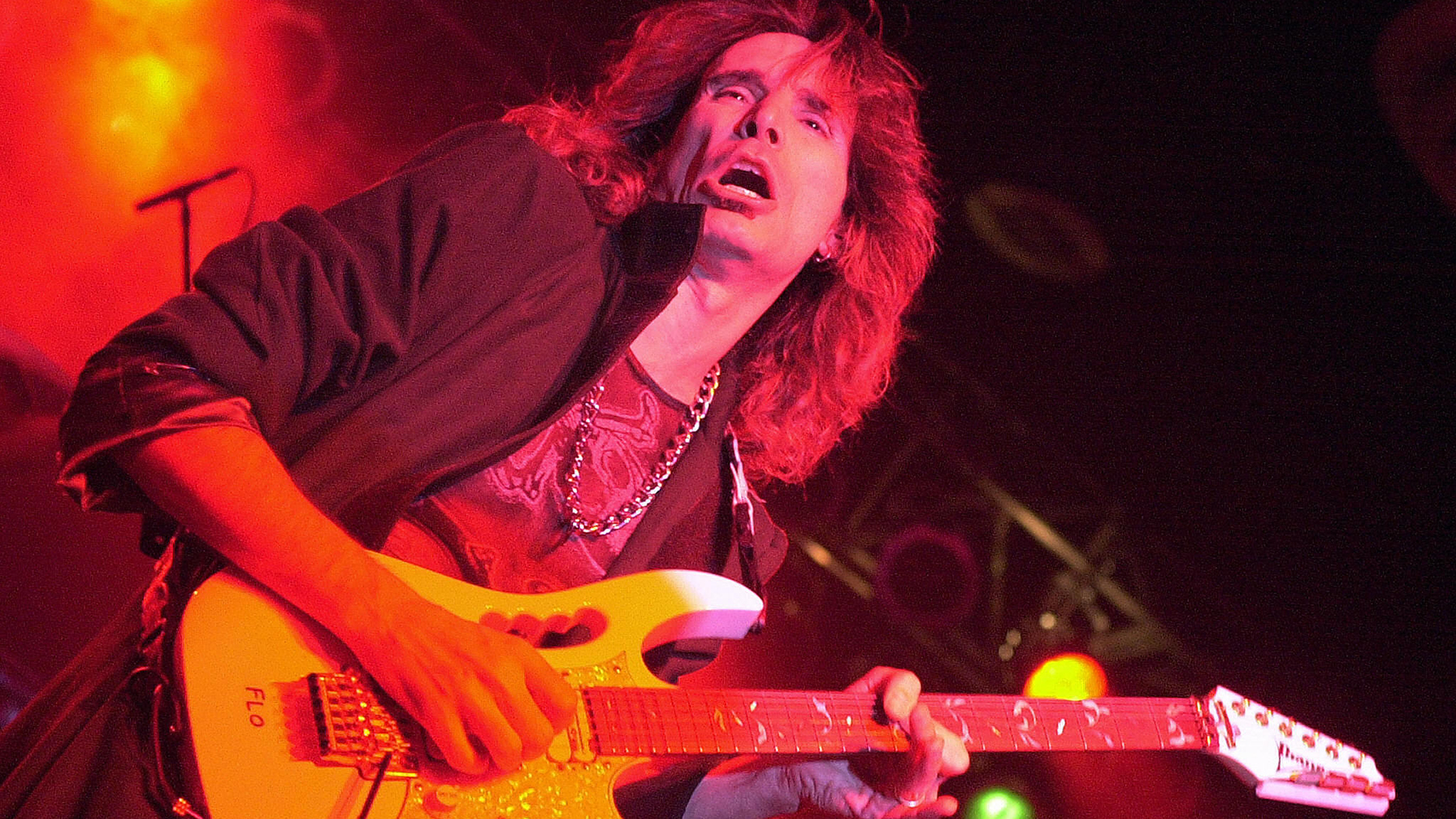
The first murmurings of Steve Vai's talent began when he was credited with "impossible guitar parts" on Frank Zappa's Man from Utopia. His first solo album, Flex-Able, showed what Vai could do when left to his own devices — namely, creating wacky tunes that proudly displayed his Zappa influence and his stunning chops. Filling the shoes vacated by Yngwie Malmsteen, Vai joined Alcatrazz for one incredible album, Disturbing the Peace. Criminally under-promoted and underappreciated, the album features songwriting, tones and arrangements that can hang with Vai's most celebrated work.
His next move, to David Lee Roth's band, brought Val squarely into the spotlight with one of the most high-profile rock gigs of the decade. He also recorded and/or toured with Whitesnake and PIL in a decade where it seemed as if there was nothing he couldn't do.
KEY TRACKS "The Attitude Song," "Viv Woman" (solo). "Jazz Discharge Party Hats" (with Frank Zappa). "Painted Lover" (with Alcatrazz). "Shy Boy," "Skyscraper" (with David Lee Roth)
1980s GEAR: '78 Fender Strat with DiMarzio X2N bridge pickup, custom Charvels, various Ibanez JEM models, Carvin X-100B amp, 100-watt Marshall, Roland SDE-3000 delay, Boss SD-1 Super OverDrive. — MB
Eddie Van Haien
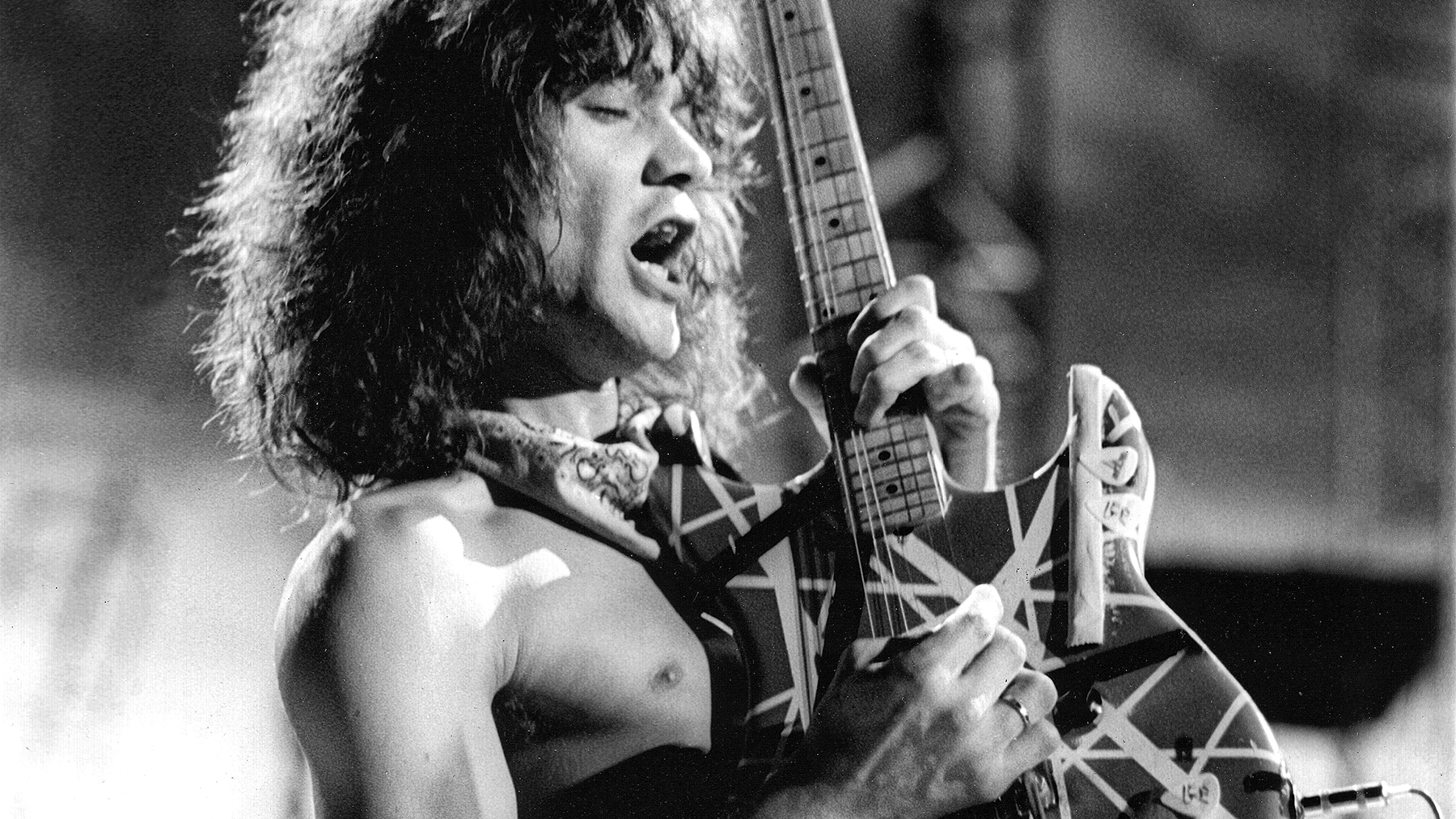
Van Halen's 1978 debut — and Eddie Van Halen's "Eruption" solo, in particular — breathed new life into rock and sent hordes of guitarists scrambling to the woodshed. However, Van Halen continued to leave jaws agape throughout the '80s. Though two-handed tapping, whammy-bar abuse and raging staccato licks are the most conspicuous marks of his signature sound, Van Haien also surprised the guitar galaxy with deft slide work, intricate classical-flavored pieces and impeccable rhythm playing. His influence on subsequent generations simply can't be overstated. Eddie Van Halen stands as one of guitar's most far-reaching and important innovators.
KEY TRACKS "Cathedral," “Could This Be Magic," "Hot for Teacher," "Little Guitars" and "Mean Street"
1980s GEAR Charvel Strat-style guitar (with a '58 Strat bridge — later exchanged for a Floyd Rose — and a Gibson PAF humbucker), custom Kramers (with PAFs or Seymour Duncans and Floyd Roses), MXR Phase 90 and Flanger pedals, Echoplex, Lexicon PCM-70, Eventide 949 Harmonizer, Roland SDE-3000 delay, Variac-equipped 100-watt Marshall plead heads with Marshall 4x12s — SH
Stevie Ray Vaughan
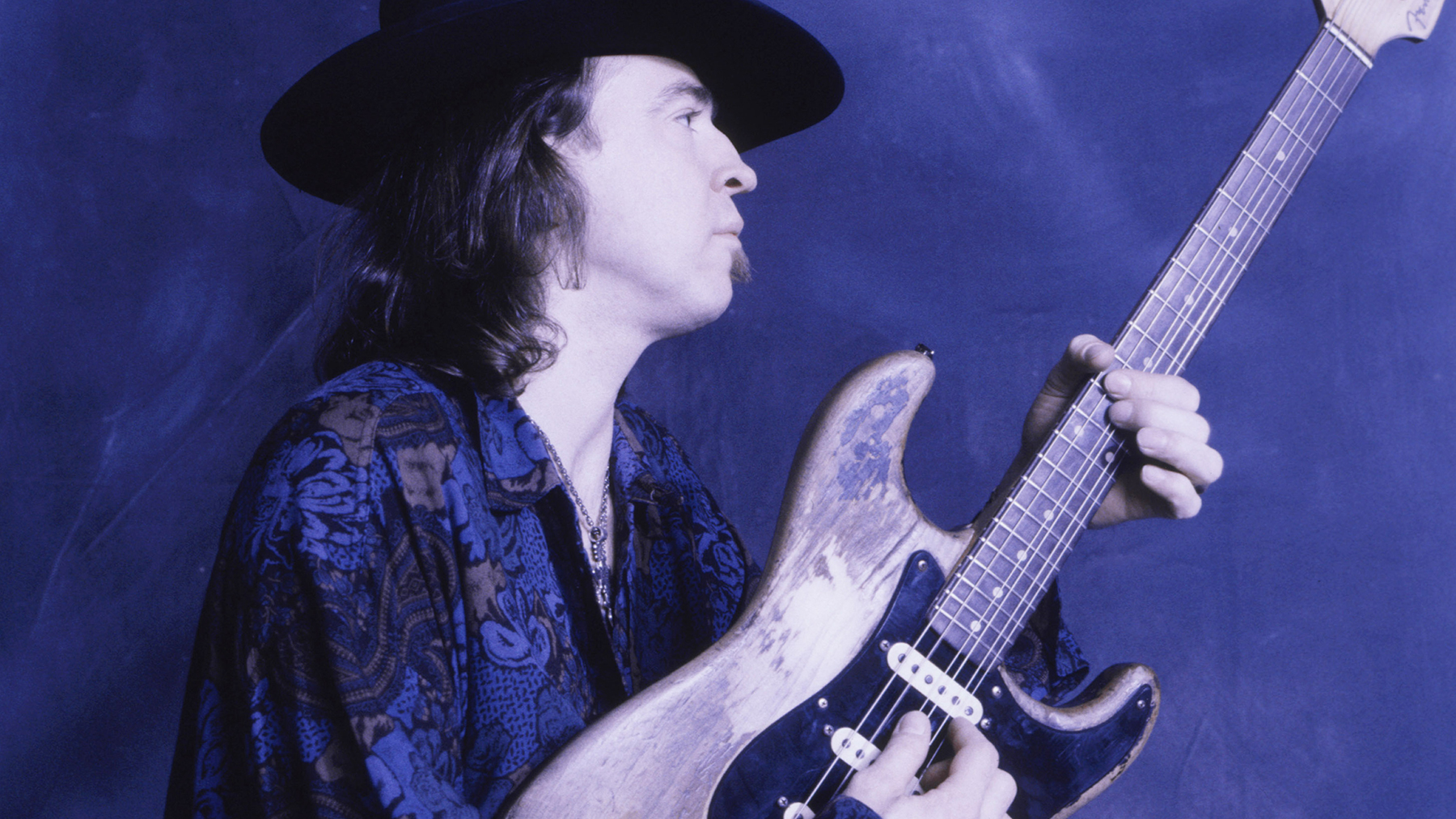
At a time when drum machines ruled and it was hipper to own a Roland G-707 synth guitar than a '62 Strat, Stevie Ray Vaughan pushed bare-knuckle blues back onto the airwaves. Ironically, most listeners first heard Vaughan as a sideman on David Bowie's club-oriented Let's Dance. In '83, pop radio was dominated by new wave and synth bands, so Vaughan's stinging Strat tones and Albert King–inspired bends in "China Girl" and "Let's Dance" sounded downright revolutionary. That same year, Vaughan's bluesy debut, Texas Flood, hit the Top 40 and established the 29-year-old as a bona fide guitar hero. For the first time in more than a decade, it was cool to play blues.
For the next seven years, Vaughan never strayed from his roots, recording taut, guitar-driven R&B with his Lone Star confederates, Double Trouble. Whether reinterpreting Hendrix and Howlin' Wolf, or pounding out an original R&B shuffle, Vaughan infused each note with palpable tension. You can witness his blend of feral energy and superb technique in Live at the El Mocambo, a video shot in a sweaty Toronto nightclub in '83. Because of its unwavering honesty, Vaughan's music remains as popular as ever.
KEY TRACKS "Lenny," "Love Struck Baby," "Pride and Joy," "Texas Flood," "Voodoo Chile (Slight Return)"
1980s GEAR '59 sunburst Fender Strat, a pair of sequentially serial-numbered '63 Fender Vibroverb 1x15 combos, Fender Vibratone, Ibanez TS-9 Tube Screamer — AE
Jamie West-Oram
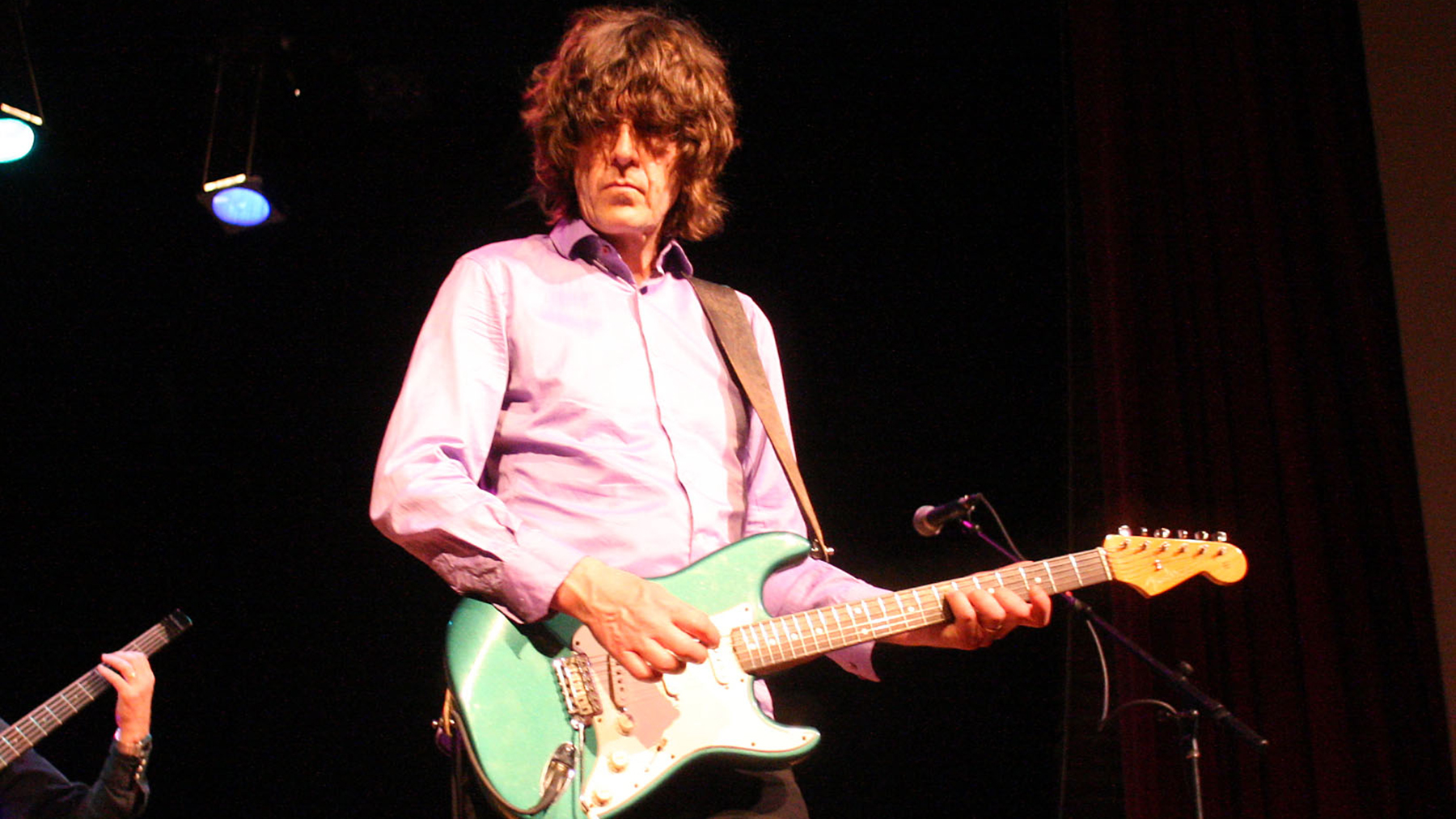
Punctuating the Fixx's radio hits with his chorused, squeaky-clean Strat tones, Jamie West-Oram was one of the most identifiable guitarists on the '80s new wave front. Though his restrained funk rhythms, shimmering harmonics, palm-muted syncopations, and echo-drenched chordal washes marked him as mainly a texturalist, West-Oram also peppered his work with quirky whammy warbles, feedback-soaked squeals, and brief-but-cathartic solos. His unique sound earned him sideman gigs with many notable artists, including Tina Turner, Depeche Mode, Stevie Nicks and Brian Eno.
KEY TRACKS "One Thing Leads to Another," "Red Skies," "Saved by Zero," "Stand or Fall"
1980s GEAR Charvel Strat-style guitar (with Schecter neck, EMG single-coils, and a Floyd Rose tremolo), Marshall 50-watt heads with JBL-loaded 2x12s, Korg digital delay, Yamaha SPX-90, MXR stereo chorus, Pro Co Rat — SH
Launched in 1967, Guitar Player was the world's first guitar magazine and is now one of the premier sources of guitar news, interviews, reviews and lessons. When a story is credited to 'GP Editors', it means it's coming from the magazine team itself and that more than one of us has worked on the story.
- Matt Blackett
- Darrin Fox
- Michael Molenda
- Art ThompsonSenior Editor
























